After the breakfast, the group that I was a part of during the trip to Zanzibar gathered in order to visit Stone Town with a local guide.
I have already mentioned that Stone Town is a part of the city of Zanzibar and that it is located on the west coast of Unguja, the biggest island in the archipelago that is called just like the biggest city – Zanzibar.
The original town where the present-day Stone Town is was founded in the 11th century and it was in fact a small fishing settlement called Shangani. It later developed into a typical coastal trading town of East Africa, but what makes it interesting is a mixture of cultures, nations and religions.
Although there are indications that humans inhabited Zanzibar ever since the Later Stone Age, it is quite reliably known that there were inhabitants on the island since the beginning of the millennium who spoke the language of the Bantu peoples (the Swahili people developed over time from the Bantu peoples) and who were mostly active in agriculture and fishing. It was only later that trade started to develop within the area of the west Indian Ocean and the east African coast, and this included Zanzibar as well.
From the very beginning of the 16th century, the archipelago of Zanzibar was taken by Portuguese and they ruled it for around two centuries. At the end of the 17th century, the Swahili leaders on the island invited the Omani rulers to help them drive the Portuguese away. And so, this happened and in 1698 the archipelago came under the rule of the Sultanate of Oman. In the first half of the 19th century, the Sultan of Muscat and Oman, Said bin Sultan al-Busaidi (reign: 1804-1856), moved his capital to Zanzibar and this was the period when the Omani Empire reached its pinnacle of power and wealth. After his death, there was rivalry about the succession, but this was resolved by one of his sons becoming the ruler of Muscat and Oman, while another became the first Sultan of Zanzibar.
A little later, in 1890, Zanzibar became a British protectorate (not a colony), which meant that the archipelago continued to be formally ruled by the sultans of Zanzibar. Eventually, there were 11 of them and the last one was deposed in 1964 as a part of the Zanzibar Revolution.
It was precisely in the 19th century that Stone Town flourished as a trading town. It was famous for the trade in spices, especially cloves, as well as for the slave trade. That intensive trade led to an increased movement of people and the Sultan of Zanzibar encouraged the arrival of foreign merchants, since there was ample space for amassing riches. In this way various smaller immigrant communities, primarily of the newcomers from Asia, formed on the island.
All of this, needless to say, had its impact on the development of the town as well and thus nowadays it reflects a mixture of cultures from Africa, Arabia, India and Europe. Stone Town is interesting enough by itself that the visitor can easily spend a couple of days walking around and exploring, but I went for a sightseeing tour with the group for about two hours.
Most of the buildings date back to the 19th century, so one has to have understanding for certain things, such as the wooden beams that support the walls of the buildings, probably lest they collapsed.
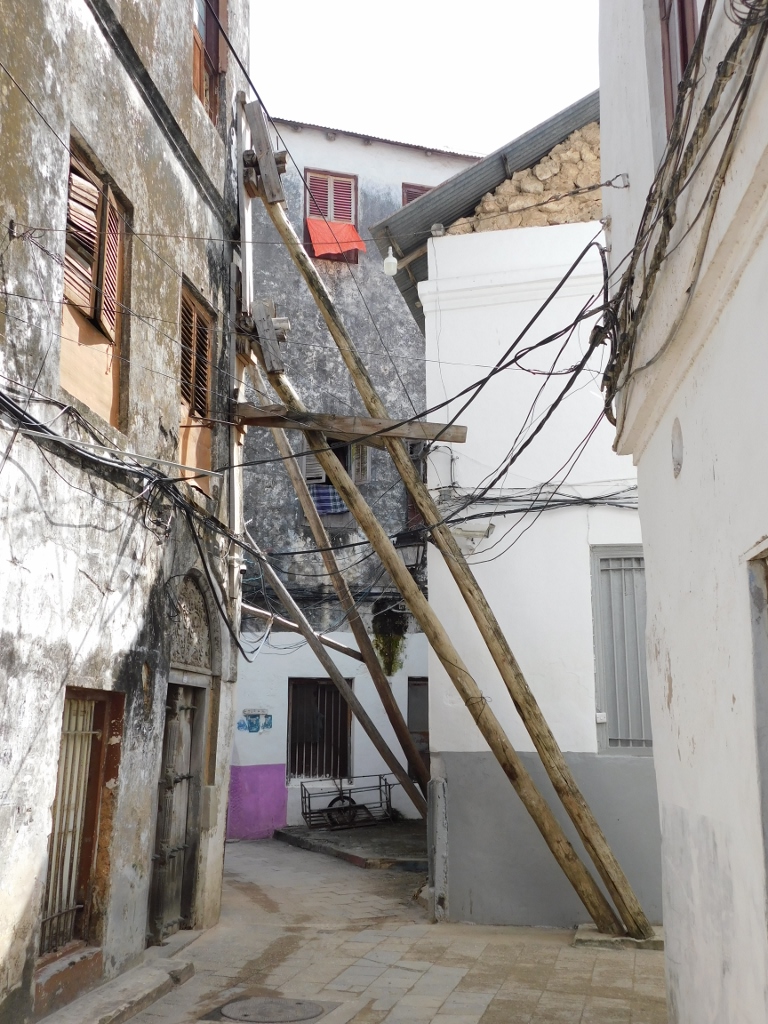 Stone Town, a detail
Stone Town, a detail
Although Stone Town is important as a monument of culture, people do live here and so we also walked past an informal shop where I noted some wonderful tropical fruits: mangos, small bananas and papayas.
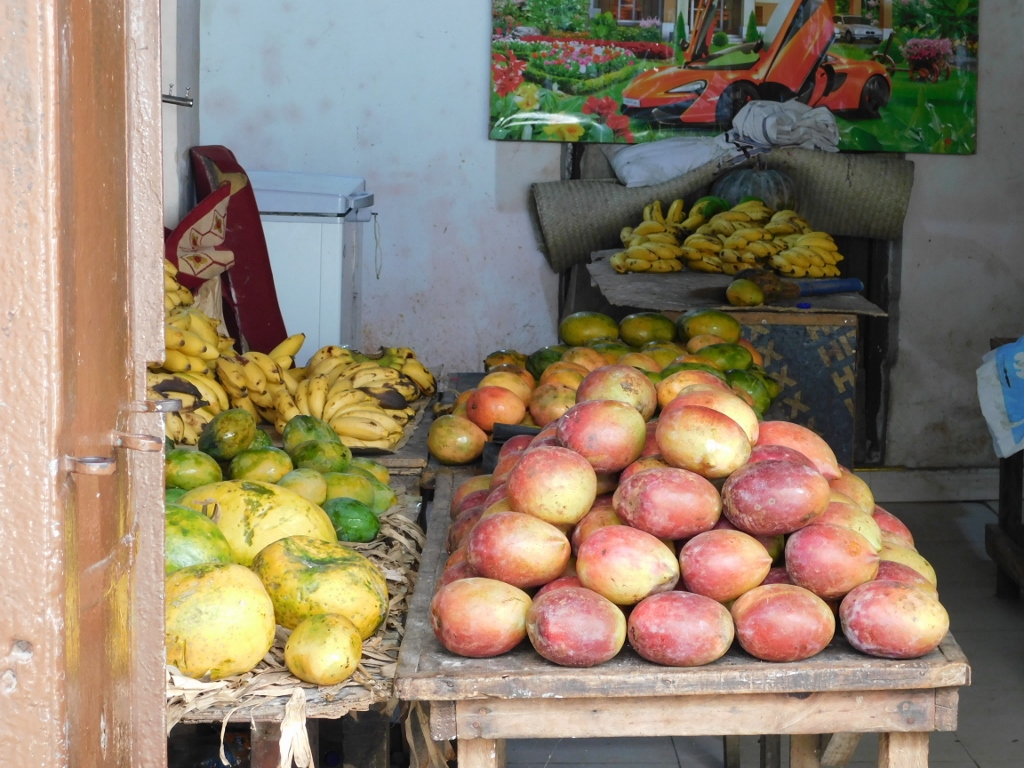 Stone Town, a detail
Stone Town, a detail
As we were slowly walking around led by a local guide, the local people worked and they worked hard. You can often see here men pulling two-wheel handcarts. The local guide jokingly commented that this was a “Zanzibar Ferrari,” but I must say that I did not find it particularly funny, since this is an exceptionally hard to do.
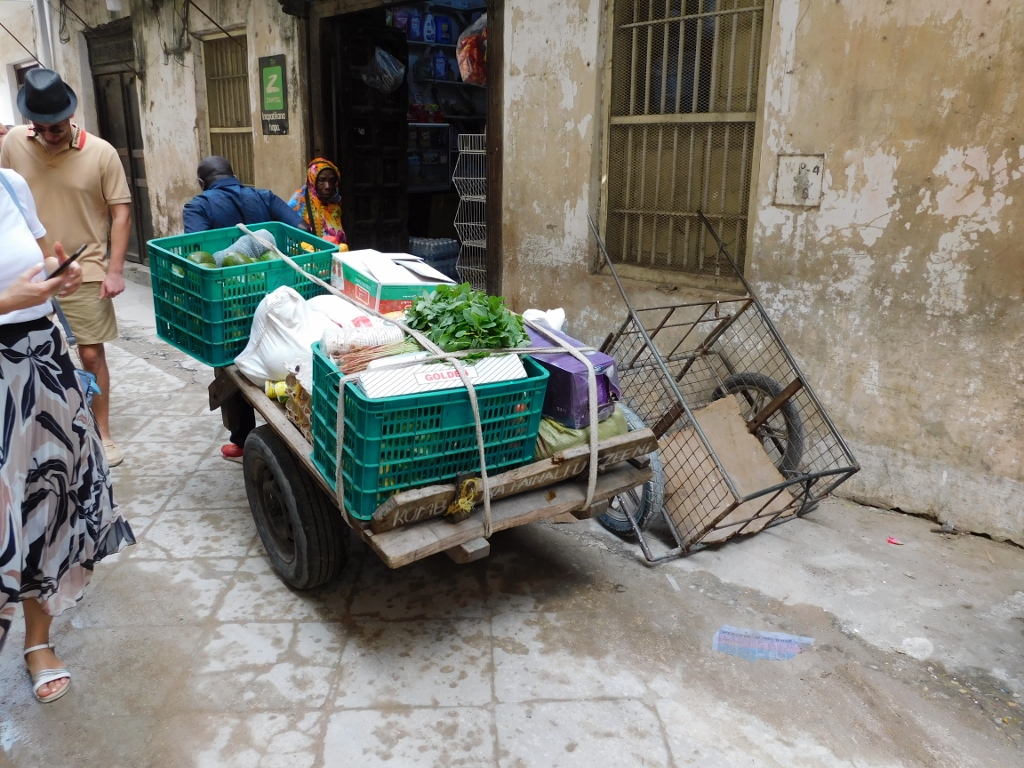 Stone Town, a detail
Stone Town, a detail
Stone Town consists of a myriad of intertwined narrow streets and at some point we came to a clearing, almost a square.
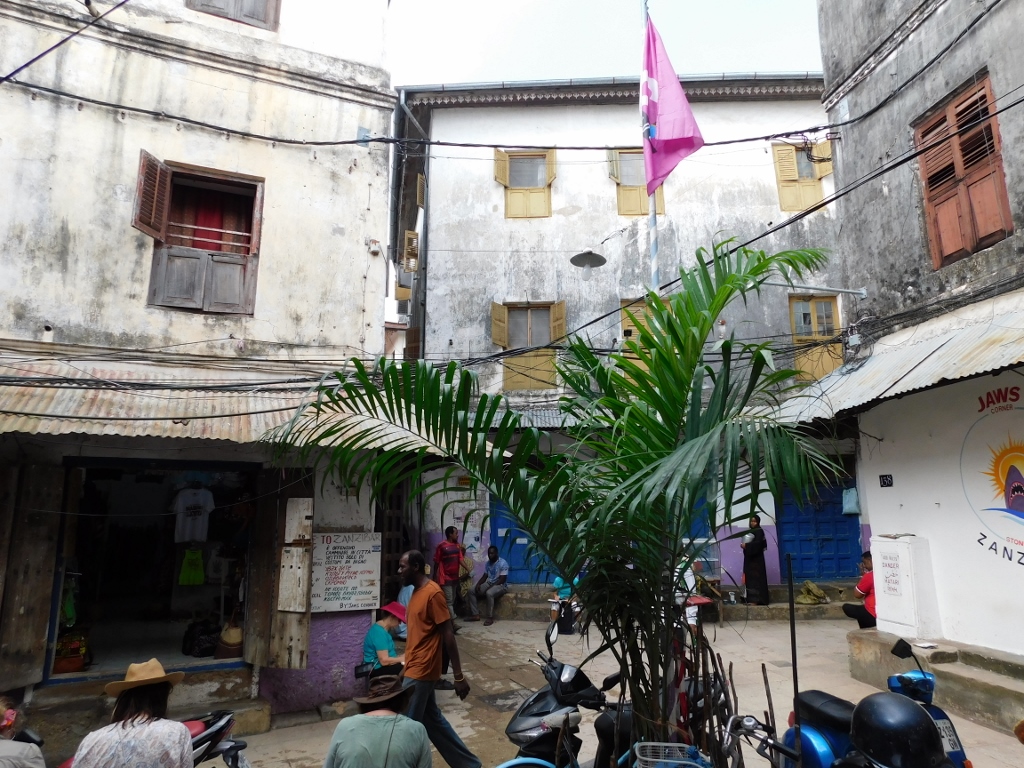 Stone Town, a detail
Stone Town, a detail
This is a well-known gathering spot, the Jaws Corner, with an association to the famous film “Jaws.”
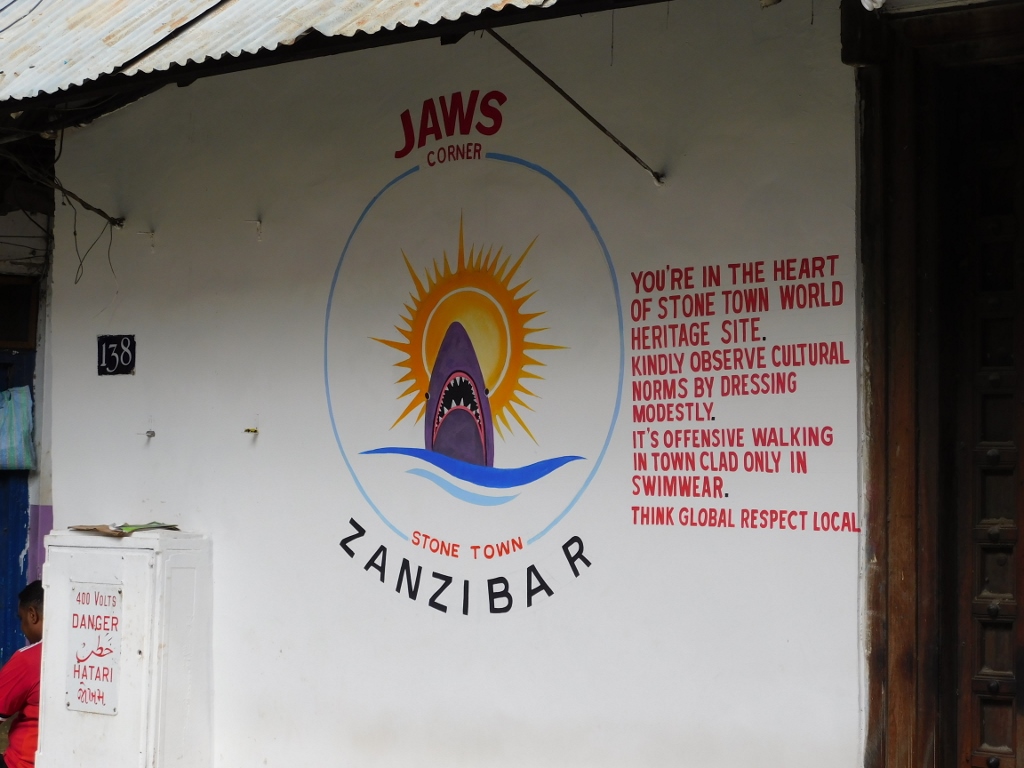 Stone Town, a detail
Stone Town, a detail
I found it interesting that there was information for tourists written in several places, while our tour representative had already stressed this before, and this was that the visitors must take care of the way they are dressed. Namely, the specific history of the archipelago has caused that the main religion here is Islam. As many as 99% of the inhabitants of Zanzibar are Muslims. Because of that, it is constantly emphasised that especially in the urban areas people should not walk around in clothes that are too revealing and this applies to women in particular. Here, on the walls around the square, these written notices stressed that people should not walk around in swimwear. I don’t know what kind of an idiot may even come up with such an idea. You don’t walk in swimwear even along the streets of European towns! Why do people come to these places and then they forget about the basic decency? If they want to walk around in swimwear or in handkerchiefs instead of dresses for that matter, then they should go to the European summer destinations. On the other hand, I have the same attitude, that local customs must be respected, when it comes to the settlement of Muslims in Europe. It is not traditional in Europe for the women to be covered in tent-like attire with only their eyes to be seen, so I believe that this should also be respected. At least, this is my opinion.
Be as it may, the Jaws Corner is a popular place among local men who usually come here early in the morning to socialise and have coffee in company. There is also a place where coffee may be bought.
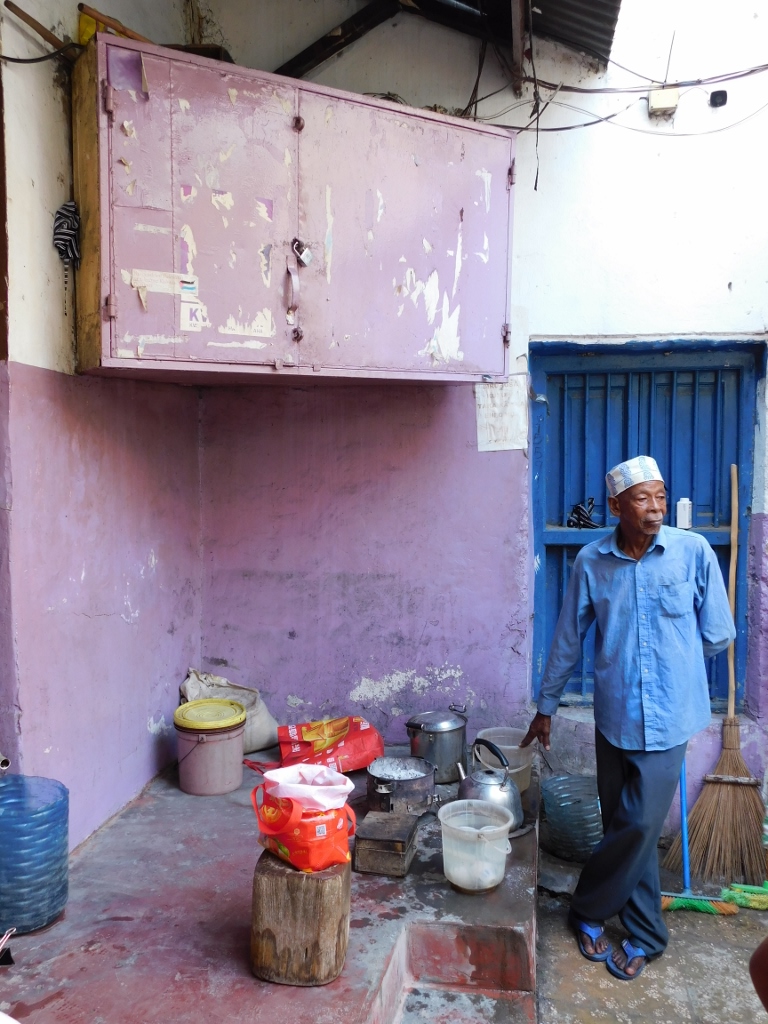 Stone Town, a detail
Stone Town, a detail
Along the way we made stops by the entrance doors leading to some houses. I have already mentioned earlier that Stone Town is famous for these doors that were and are still today a status symbol of the owner of the household.
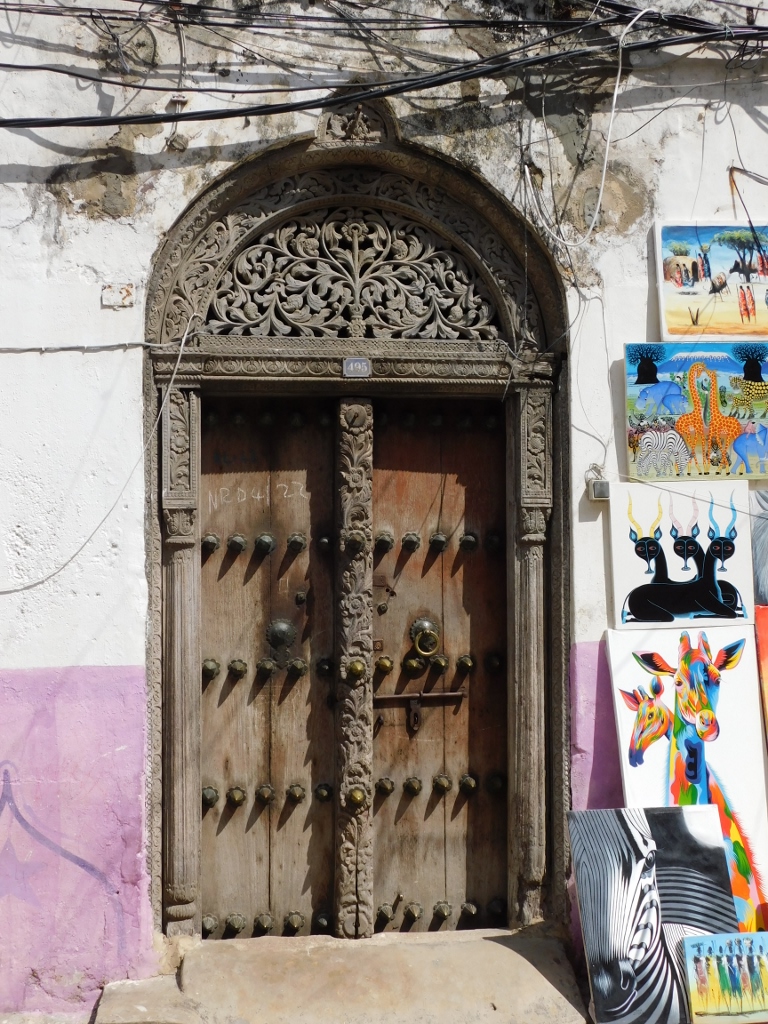 Stone Town, a detail
Stone Town, a detail
This custom was brought by the Indians who often had such doors back in their homeland and this can be seen by the massive metal studs on the surface of the door. According to what the guide told us, this element on the doors back in India prevented elephants from pushing such doors during war conflicts. I’m not quite sure about this story, but maybe that’s what it is. In any case, it looks interesting. In addition to these metal decorative elements, the wooden doors have abundance of wood carvings and numerous details each of which carries its own symbolism.
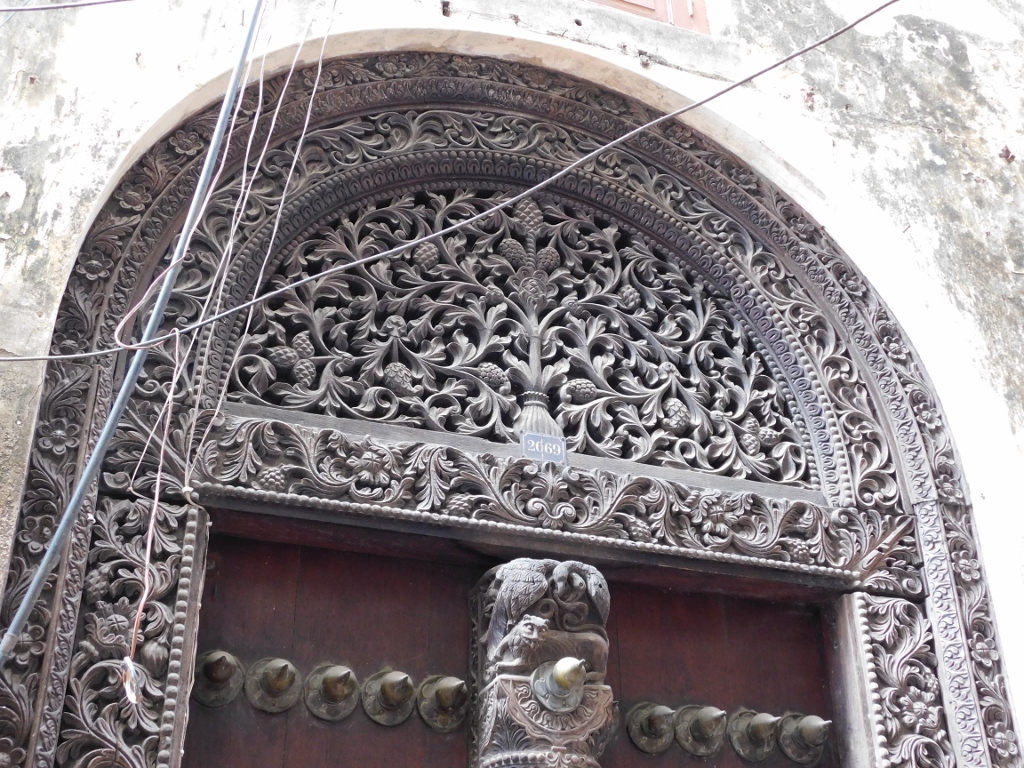 Stone Town, a detail
Stone Town, a detail
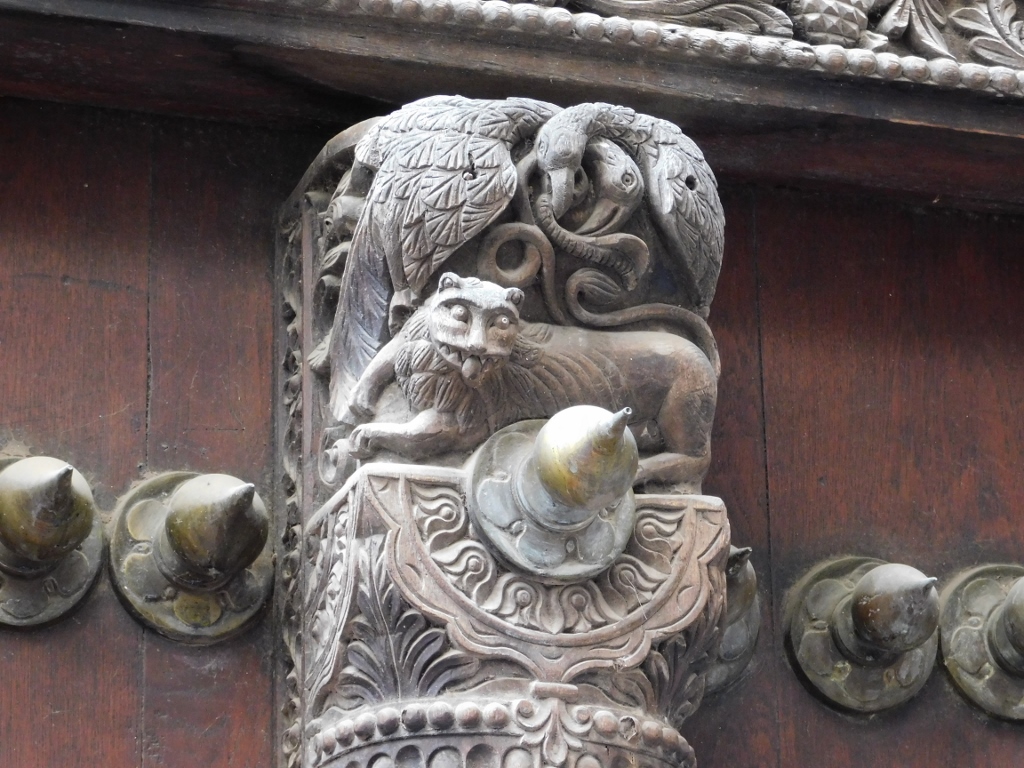 Stone Town, a detail
Stone Town, a detail
Over time, two versions of these doors developed on Zanzibar – the Indian and the Muslim ones. The main difference is that the Indian doors include an arch, while the Muslim ones have a flat lintel that most often exhibits an inscription in Arabic. Still, both of the versions have a great wealth of decorative details.
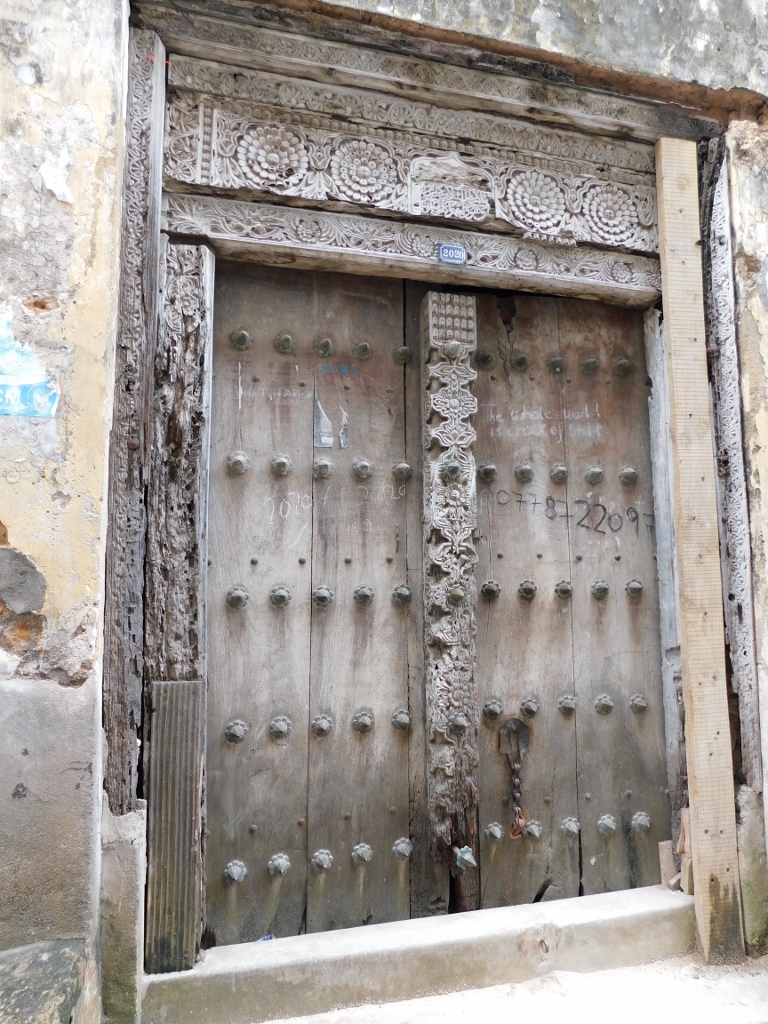 Stone Town, a detail
Stone Town, a detail
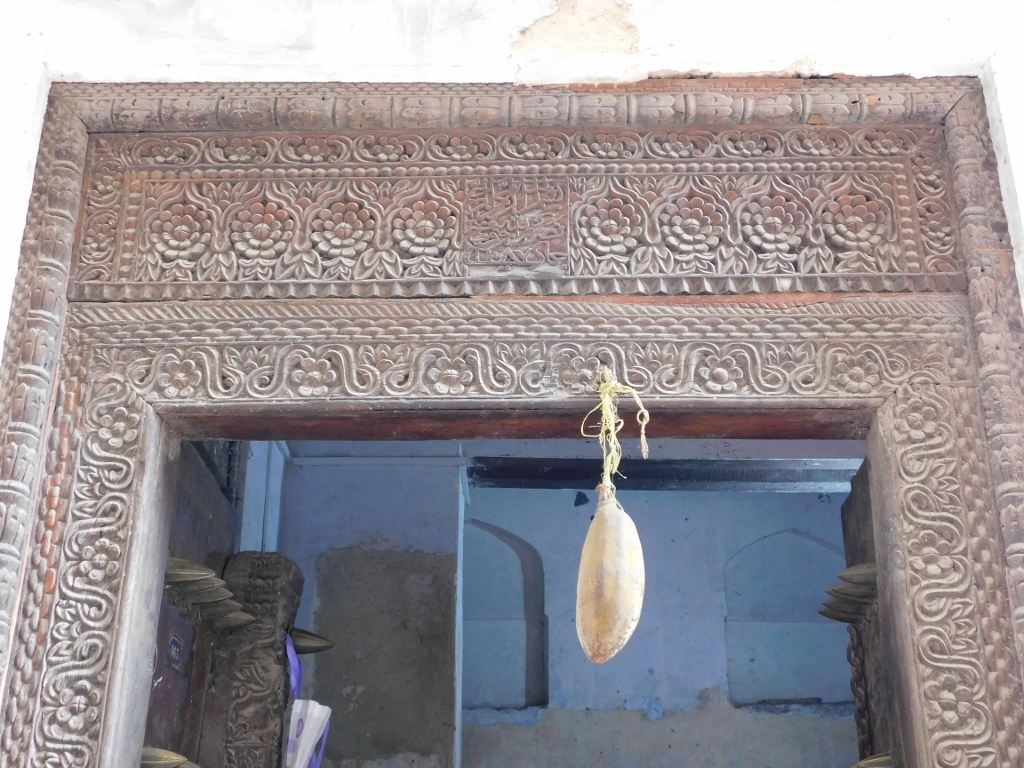 Stone Town, a detail
Stone Town, a detail
We continued with the walk along the lanes of Stone Town and thus we reached the Anglican Church as well.
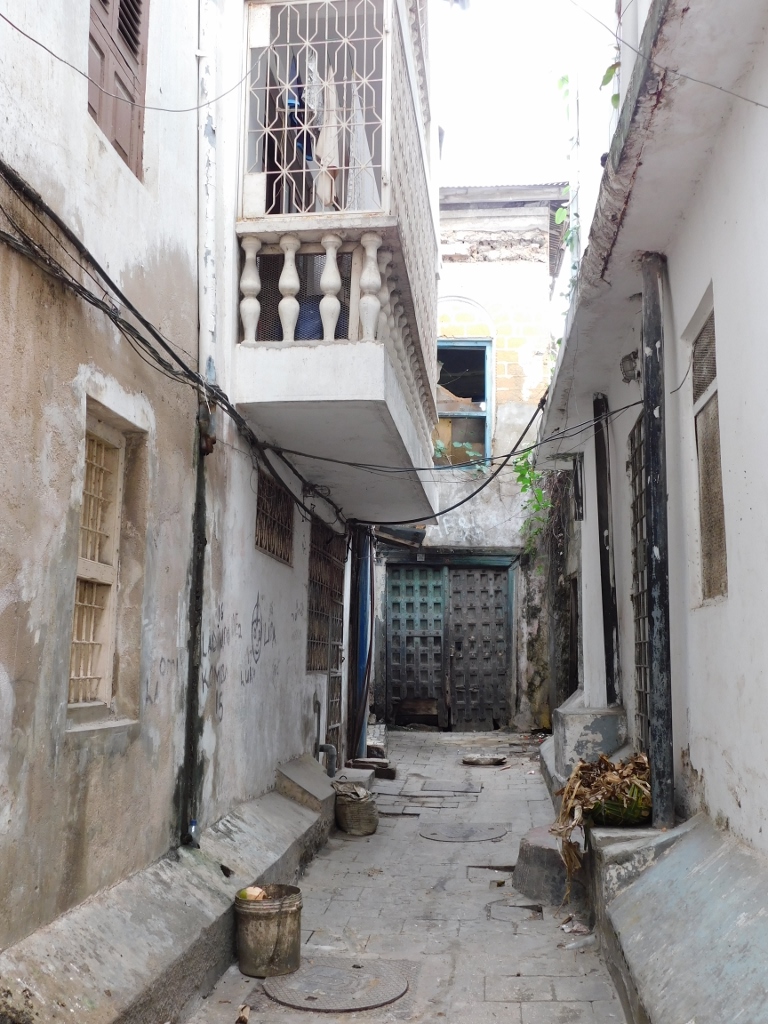 Stone Town, a detail
Stone Town, a detail
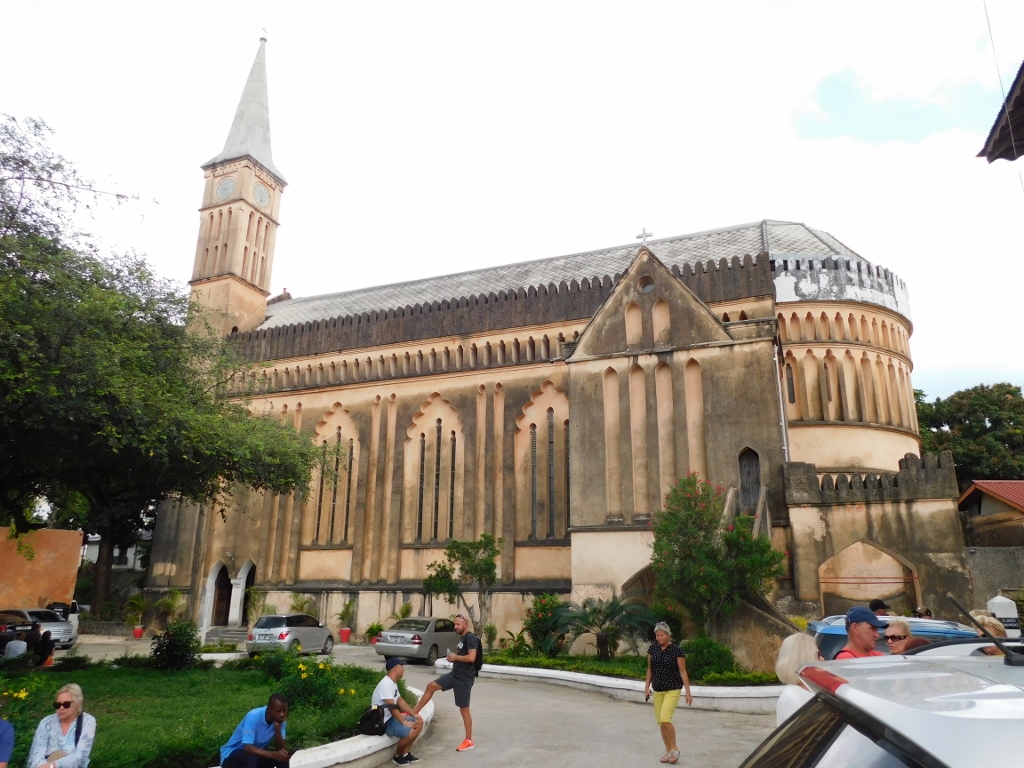 Anglican Cathedral in Stone Town
Anglican Cathedral in Stone Town
Before entering the church, the girl who was our tour representative during the stay on Zanzibar, showed us a tree that grew in the churchyard. This was a type of a soapberry tree, from the Sapindus genus, the fruits of which contain a large quantity of saponin and in combination with water, when you rub them between your palms, they foam and can be used for washing hands. She collected a few berries that had fallen to the ground and then the washing of the hands could start.
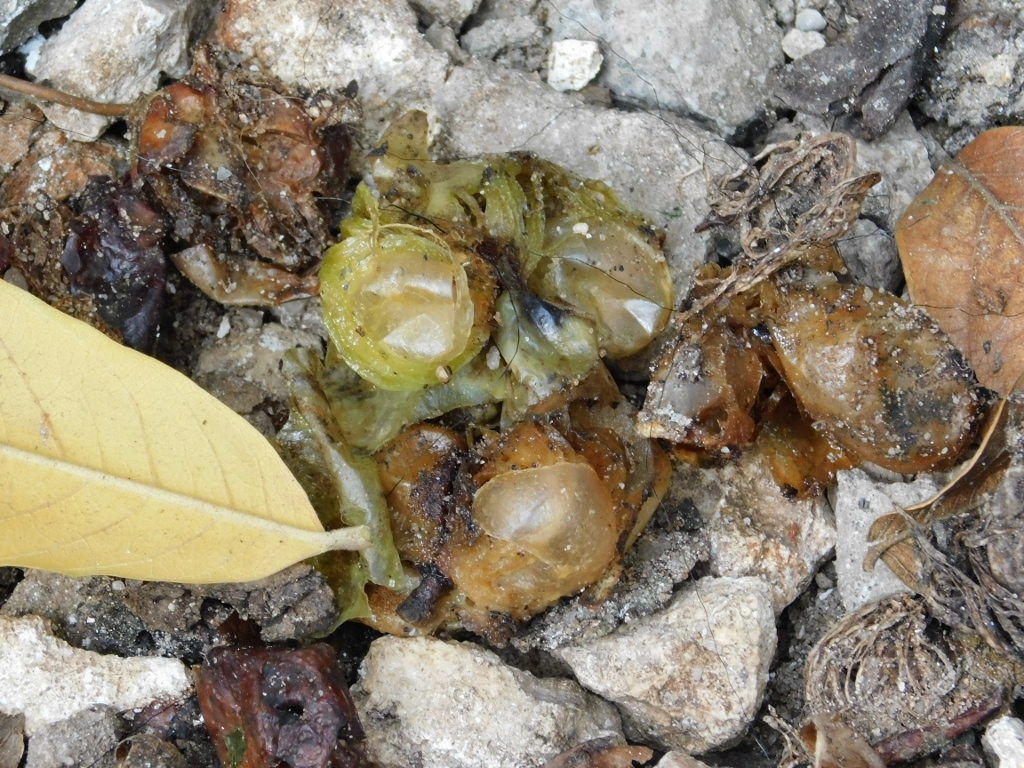 Fallen-off berries
Fallen-off berries
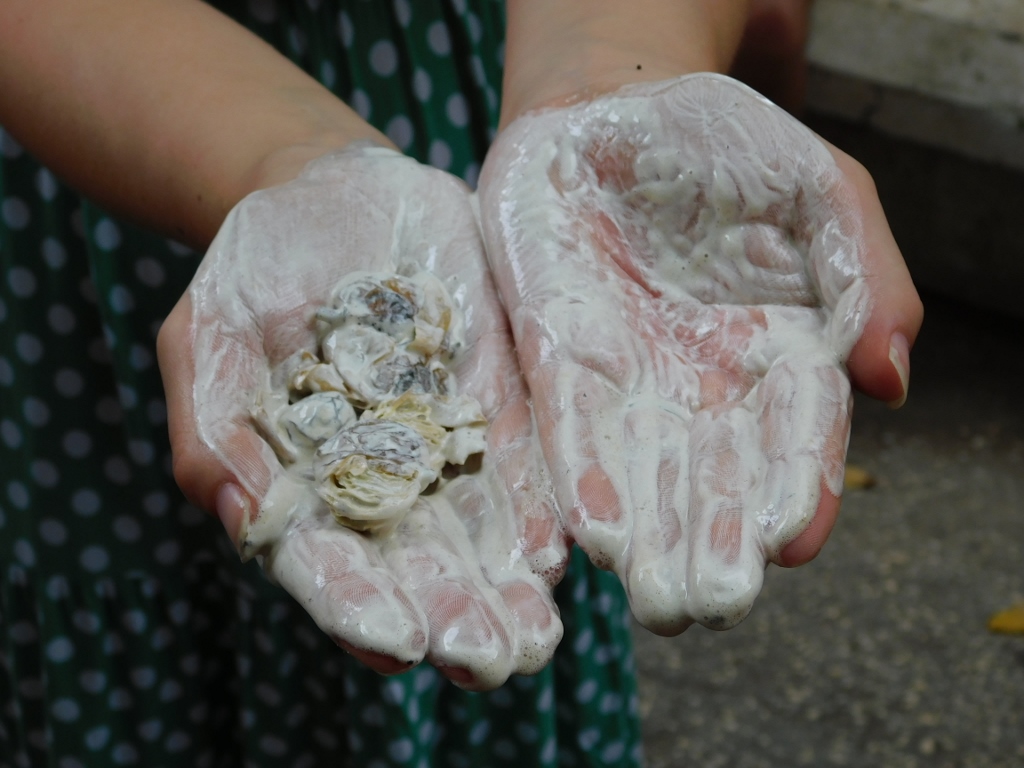 Washing of hands with berries from nature
Washing of hands with berries from nature
While some members of the group went to buy some water and other stuff, I took an opportunity to take a photo of an exceptionally beautiful woman who was sitting there. When I told her I thought she was beautiful, she smiled and said that she was already an old woman (a grandmother), but I think that she was actually younger than me, while I’m still not ready to think about myself as an old crow. In other words, this was a gorgeous woman in her prime!
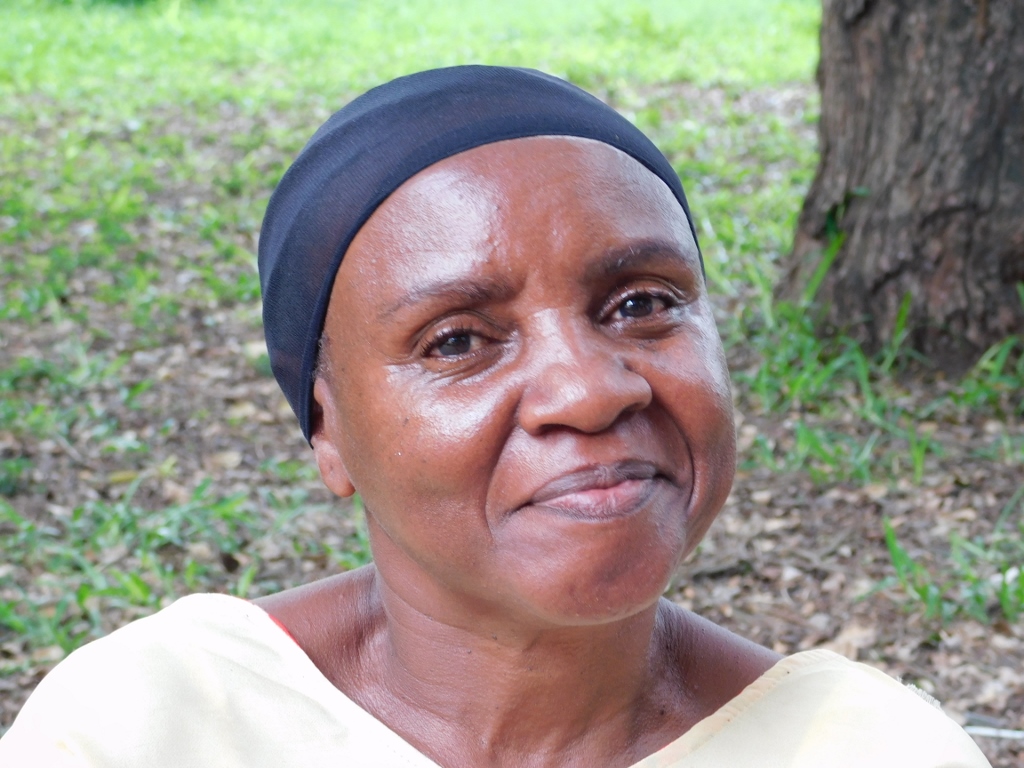 Beautiful Zanzibar woman in her prime
Beautiful Zanzibar woman in her prime
And then a strong rain shower started that fortunately lasted very briefly, but long enough for the people to move out of the churchyard.
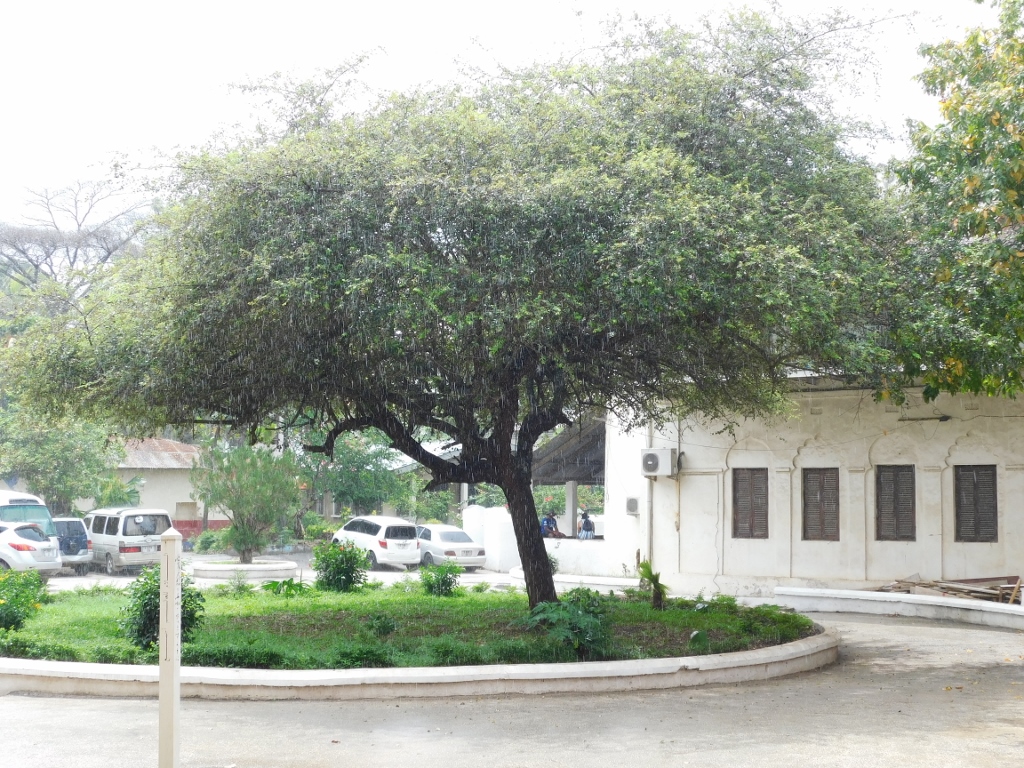 Shower in Stone Town
Shower in Stone Town
We entered the cathedral called Christ Church. The construction of the first Anglican church in East Africa started in 1873 and it was coral stone, a type of limestone taken from the surrounding coral reefs, that was used for its construction, like in the case of most of the buildings in Stone Town.
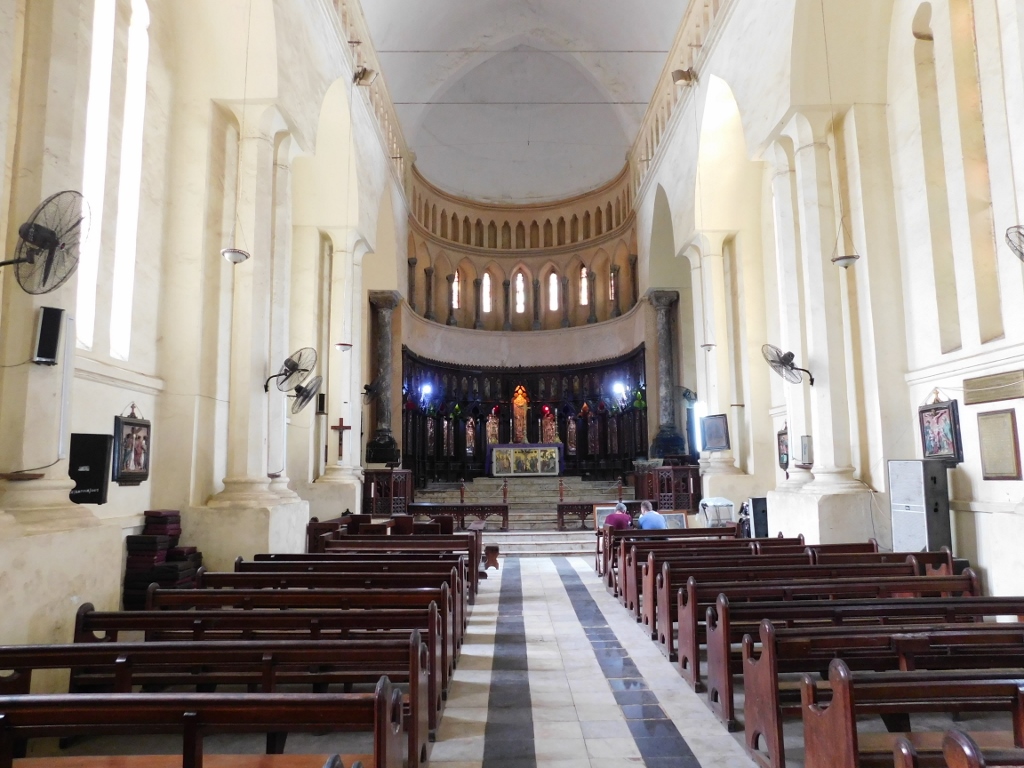 Christ Church in Stone Town
Christ Church in Stone Town
In the photo above, on the left-hand side, you can see a wooden cross on a pillar. This cross was made from the tree underneath which David Livingstone, a famous British explorer of Africa, was buried. He passed away in Zambia in 1873.
There is, however, some much more interesting data in my opinion about the church. Namely, Zanzibar was a famous place for the slave trade and the biggest slave market on Zanzibar and the last one was located right here where the church is today. Apparently, the construction of the cathedral was supposed to celebrate the end of slavery, while the altar was supposed to be in the exact spot where the main whipping post for insubordinate slaves used to be.
In any case, the next thing in our sightseeing itinerary was the museum of slavery that can be found within the churchyard, but before going there I took another photo of the church from a different angle in order to show the minaret of a nearby mosque.
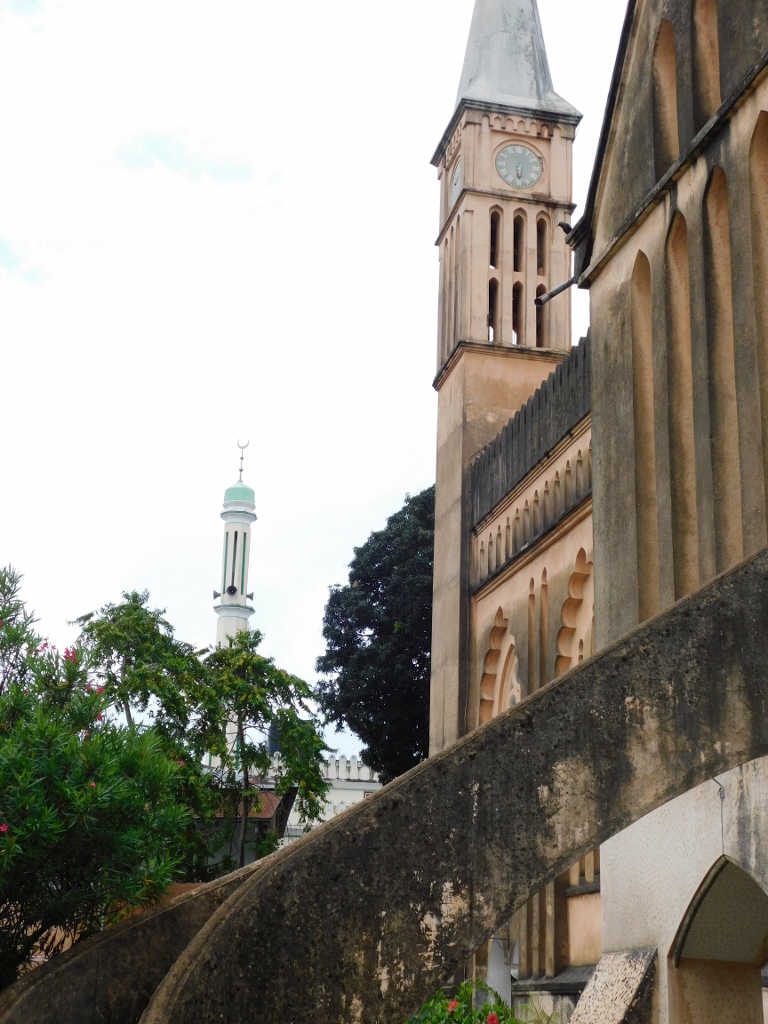 Anglican Cathedral and a minaret in Stone Town
Anglican Cathedral and a minaret in Stone Town
I also went to the nearby “Memory for the Slaves” monument. I find everything that has to do with slavery and slaves exceptionally disturbing and heart-breaking, this monument included.
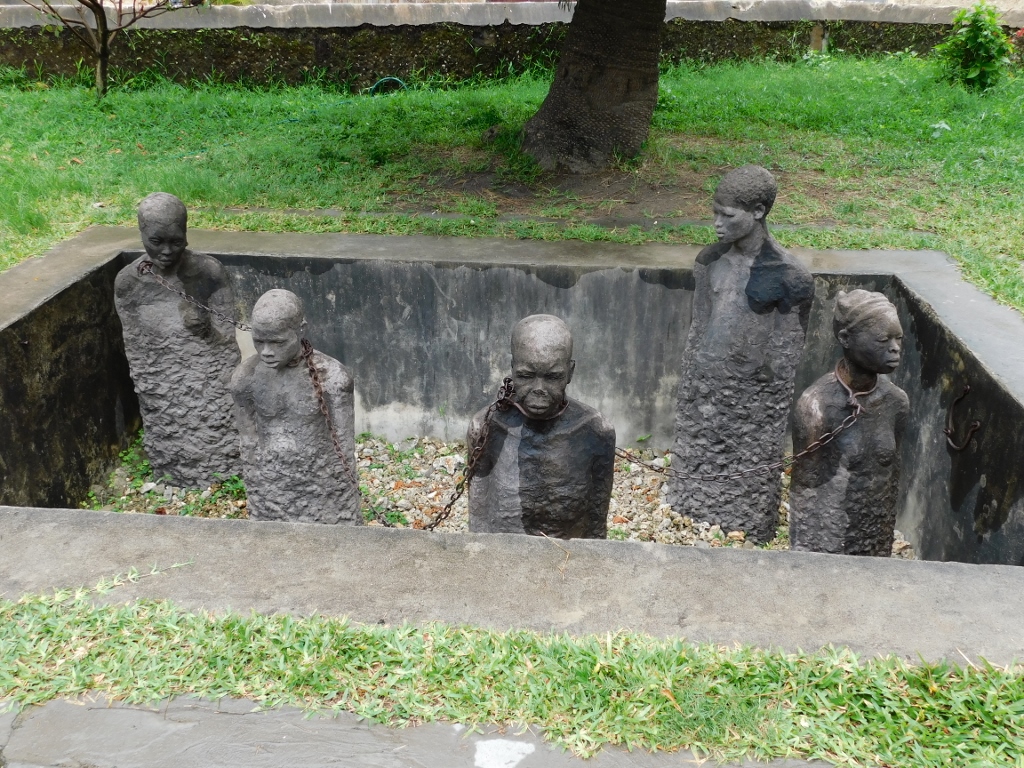 Memory for the Slaves
Memory for the Slaves
Then we went to visit the remains of the premises where the slaves were kept before being sold off. The access was narrow, low and rather dark and nothing could be seen there if it wasn’t for some strong light beams in a couple of places. The next photograph shows a platform where the slaves used to lie, for they could not stand up at all, while in the middle there is a canal that would be reached by the water that would take the biological waste away, since the canal was used as a toilet. If this is not horrible and shattering, I don’t know what is. And I do hope that all of those who were involved in any way in the trading and torturing of other people whom they turned into slaves are burning in hell and that they will stay there until the end of time. They do not deserve anything less.
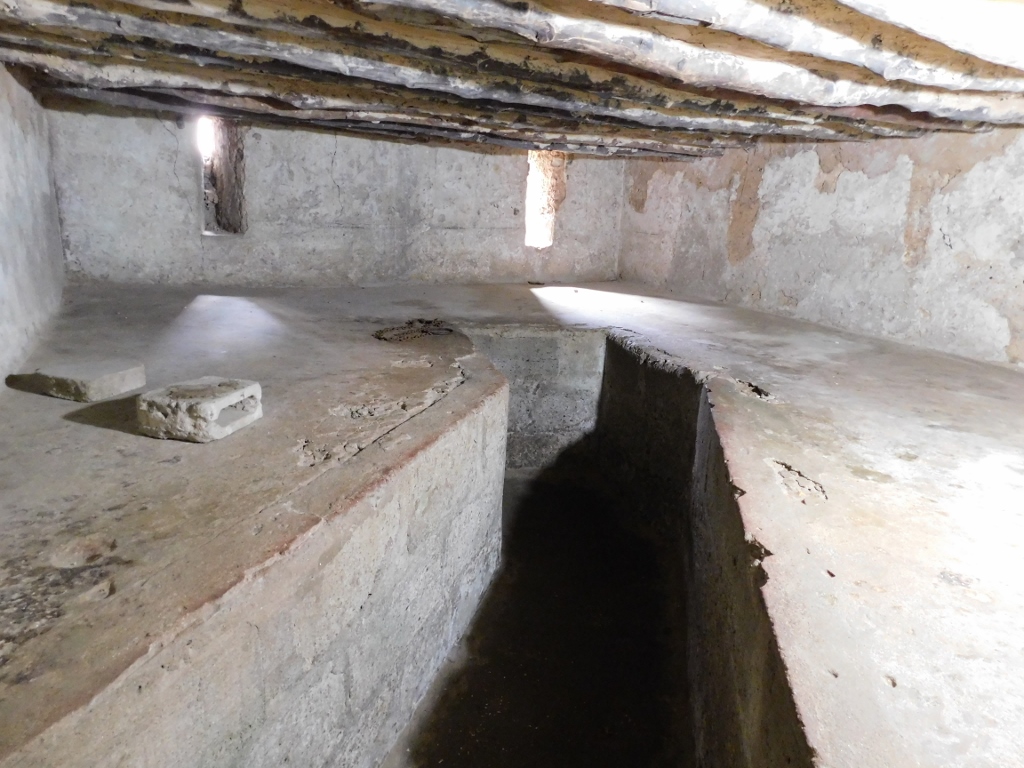 Detail from the museum of slavery
Detail from the museum of slavery
Now we headed for the Darajani Market, the main market of the island, and along the way we walked past some houses made for merchants who came to the archipelago with their families back in the day. The architecture of these buildings is very practical and typical. The shops are located on the ground floor, while the family lived on the upper floor.
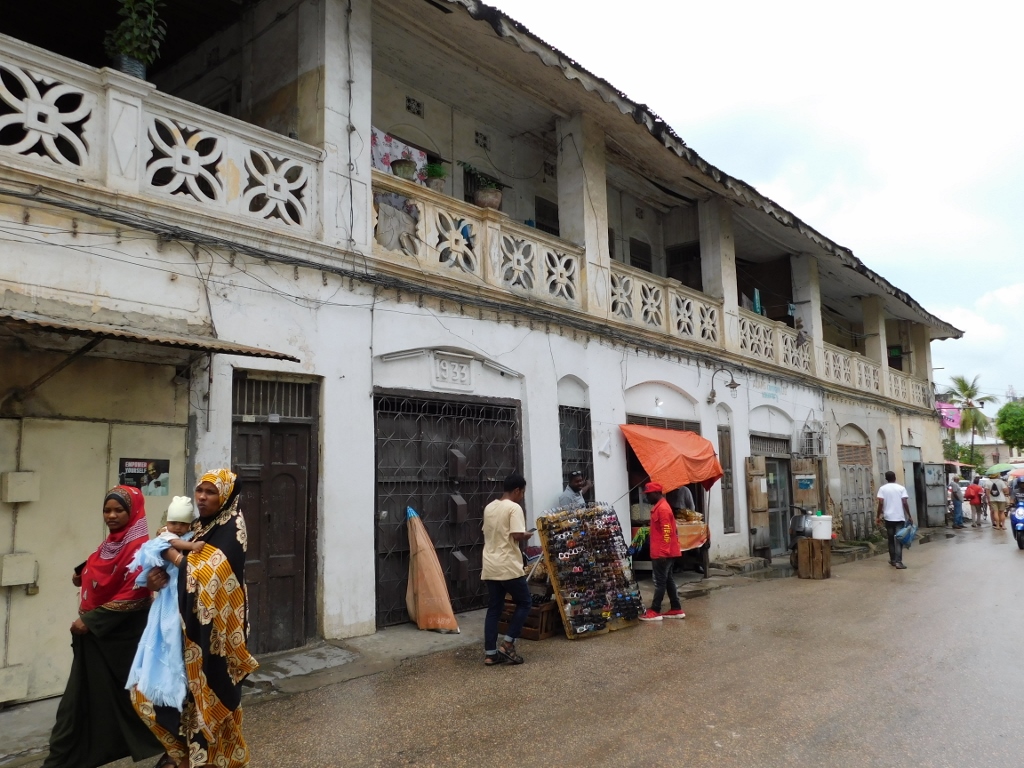 Stone Town, a detail
Stone Town, a detail
I have already mentioned before that Stone Town is a part of Zanzibar City and that this is the historic part of the city. Zanzibar City also includes another part called Ng’ambo, which literally means “the other side.” The reason for this is that in the past these two parts of the city were separated by a stream, a creek, but this area was filled over time and there is a big street instead. So, the west part is the historic Stone Town, while the east one is Ng’ambo that is a bigger and more modern part of the city. In the past, the street that separates these two urban areas used to be called Creek road, but today this is Benjamin Mkapa rd.
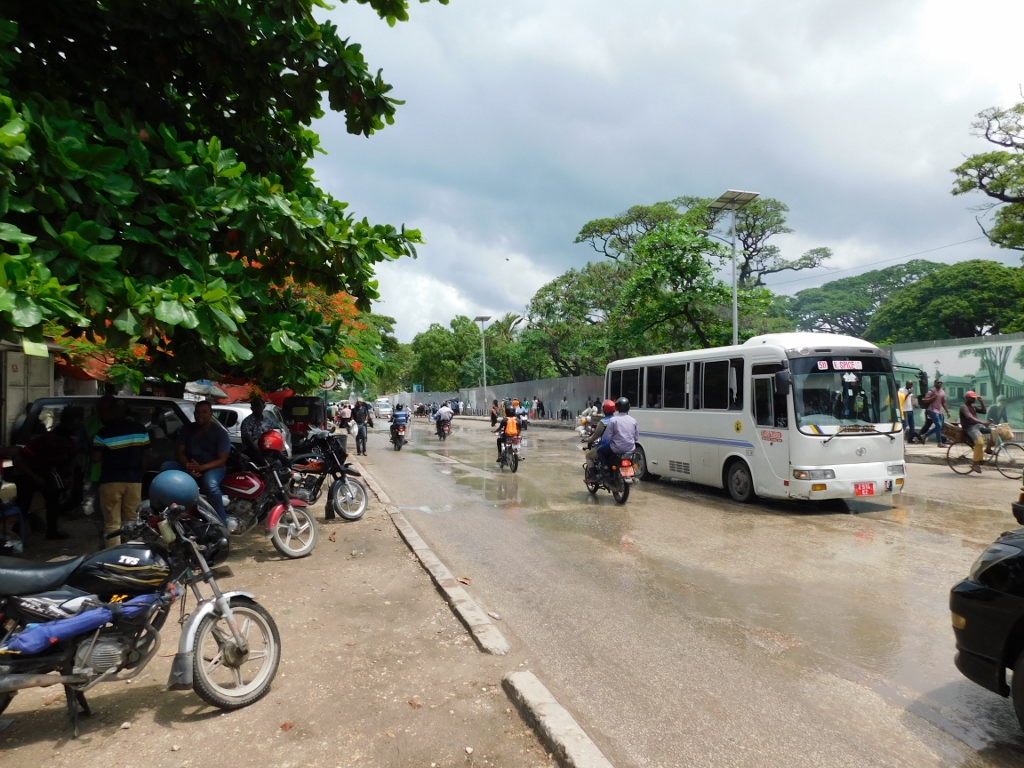 Benjamin Mkapa rd
Benjamin Mkapa rd
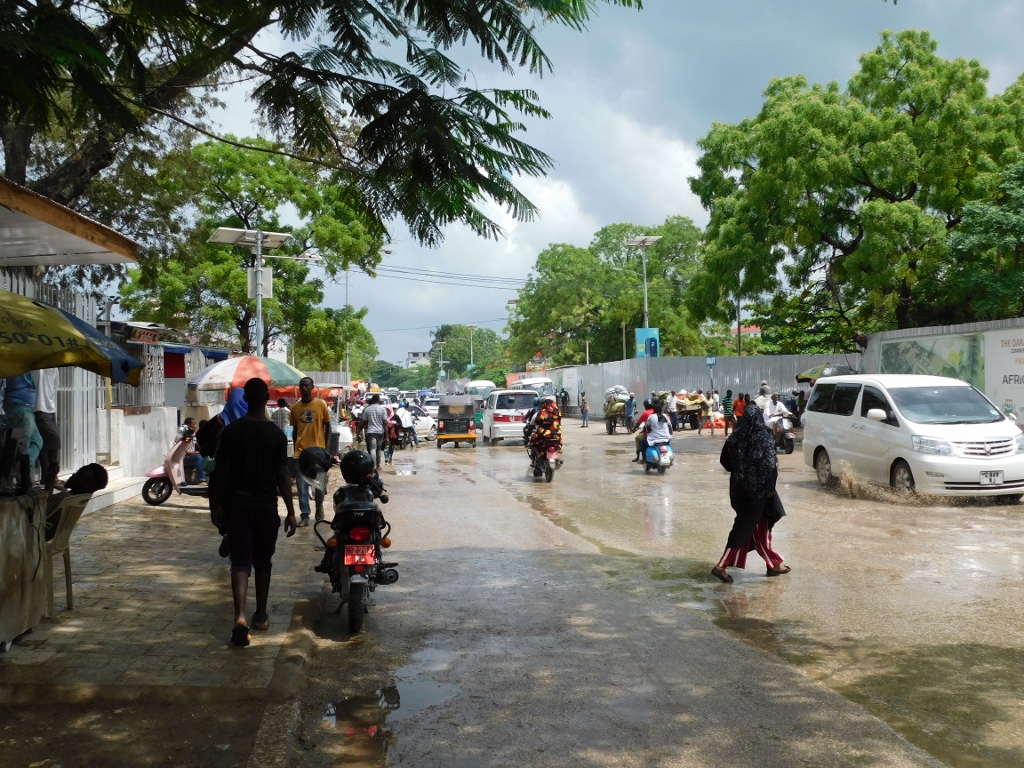 Benjamin Mkapa rd
Benjamin Mkapa rd
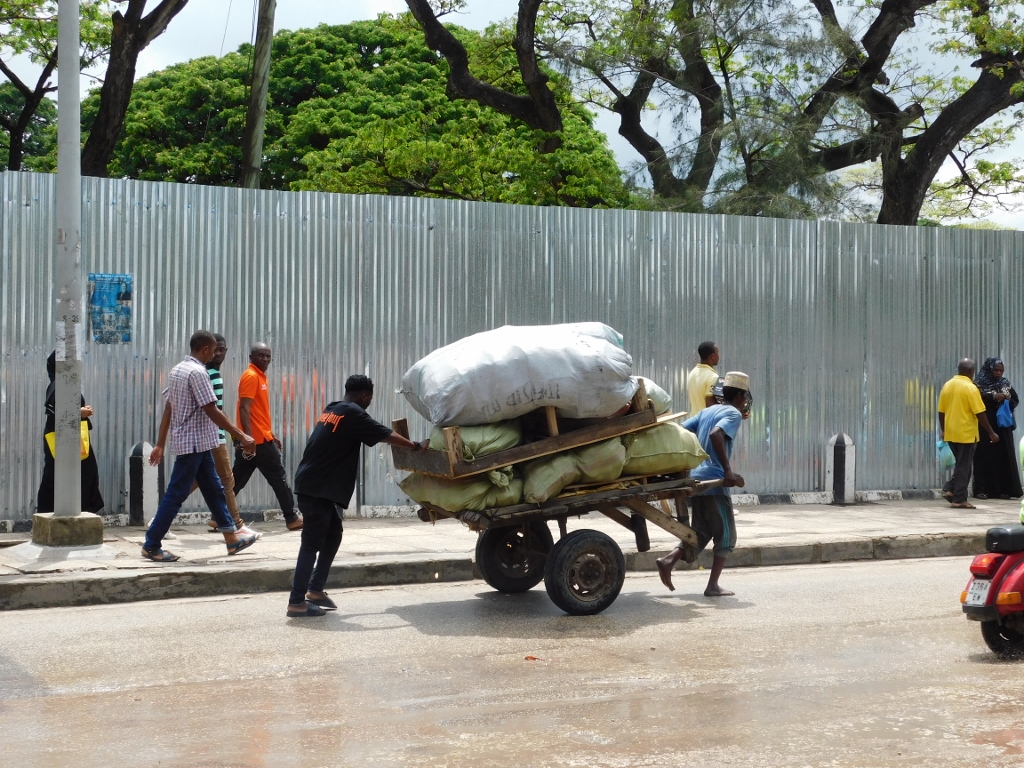 Benjamin Mkapa rd, a detail
Benjamin Mkapa rd, a detail
In addition to the crowd created here by people and vehicles, I also noticed a beautiful, picturesque flame tree (Delonix regia).
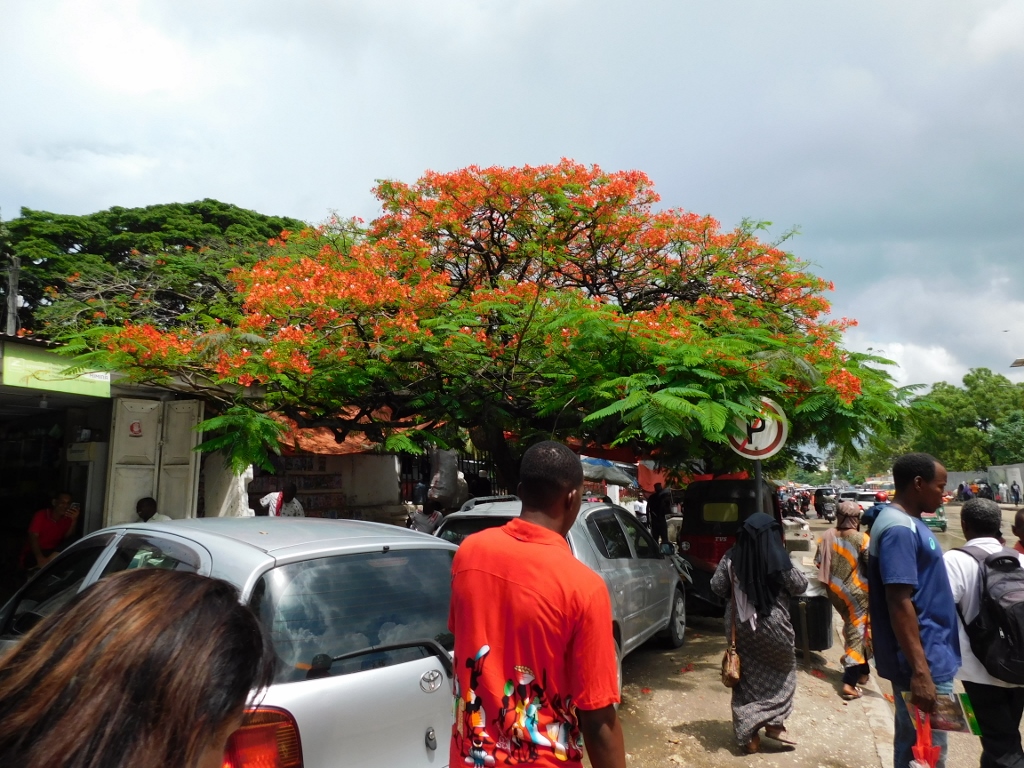 Benjamin Mkapa rd, a detail
Benjamin Mkapa rd, a detail
We came here in order to go and visit the Darajani Market that extends from this bigger street westwards within Stone Town. Even before venturing into the alleys in which there were numerous stalls and shops with all sorts of goods, we could see some of the goods offered alongside the main street. I have been told that the pineapple from Zanzibar is the testiest in the world, but, although the pineapple I ate here was really excellent, I think this is a question of subjective opinion.
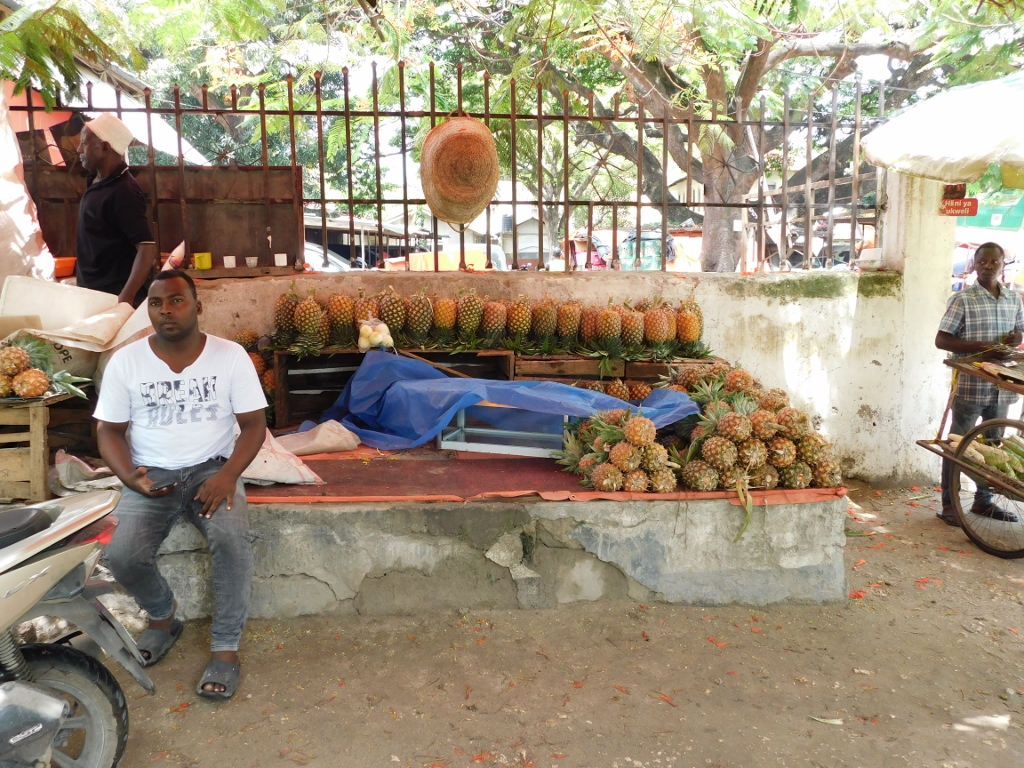 Introduction to the Darajani Market
Introduction to the Darajani Market
The market offers fresh fruits and vegetables, meat, fish and sea food, as well as spices, souvenirs, plastic goods, mobile phones, ... probably everything one could ever need over the course of the lifetime. I did not find all of that interesting to take photos of, but I did make a few shots before another shower started and we all had to hide lest we got drenched.
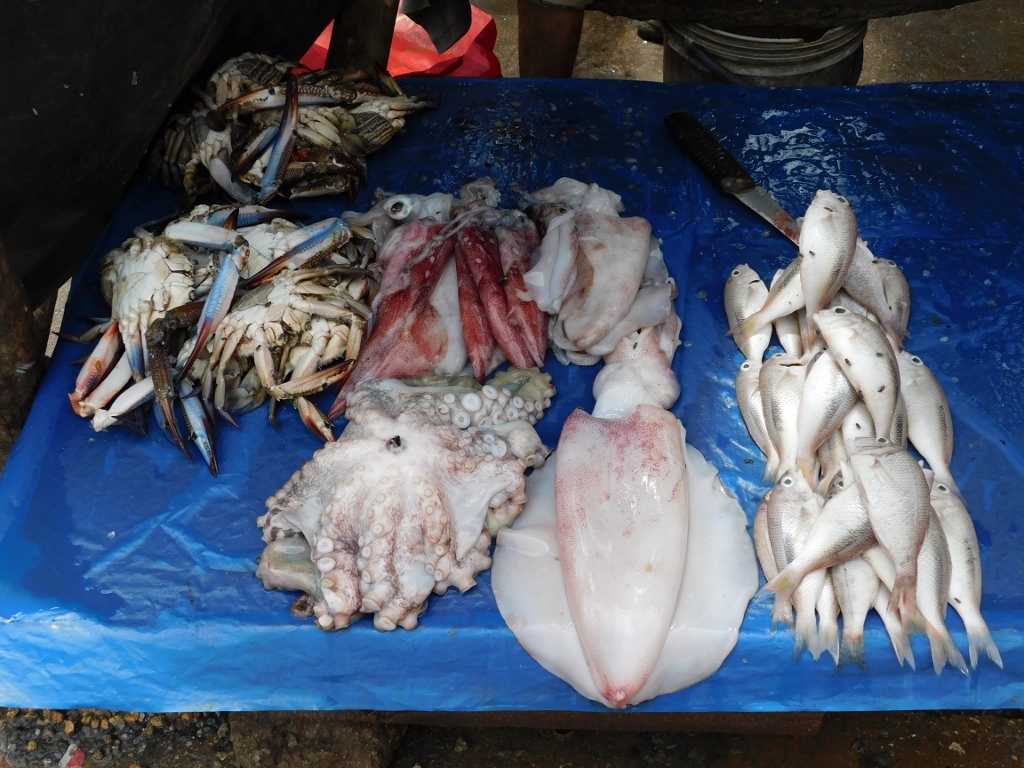 Darajani Market, a detail
Darajani Market, a detail
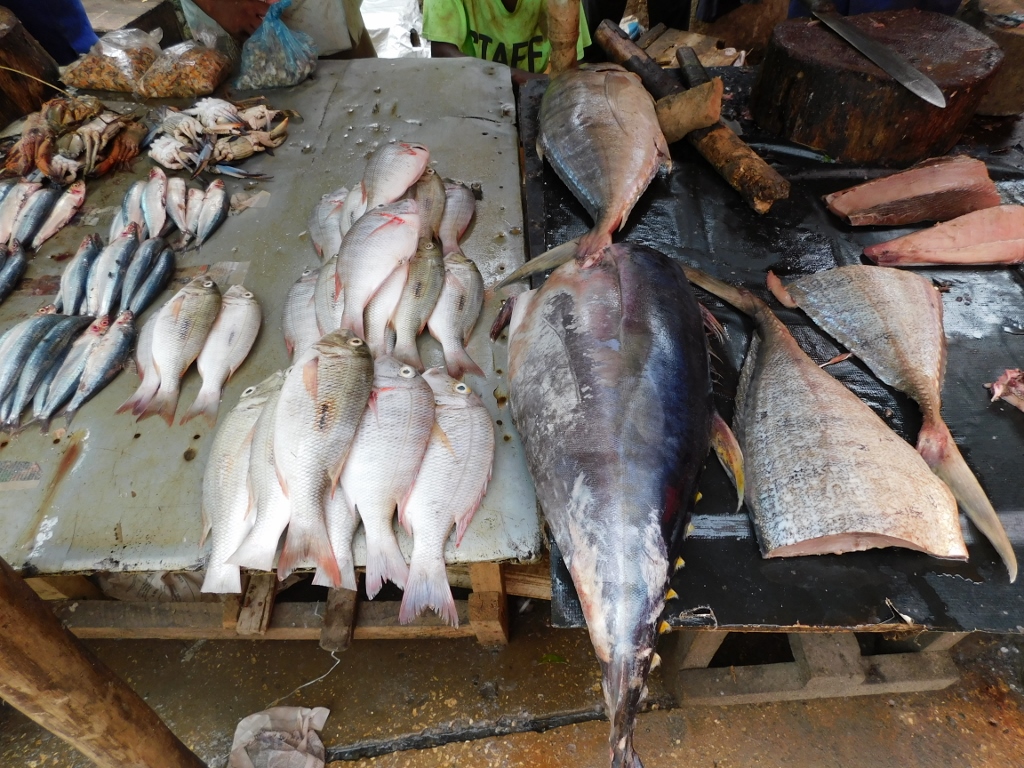 Darajani Market, a detail
Darajani Market, a detail
Still, while I was waiting with the group and the local guide for the shower to be over, I took the advantage of my good position to take photos of some details from the market that have nothing to do with the merchandise, but rather with the circumstances, the people and the customs.
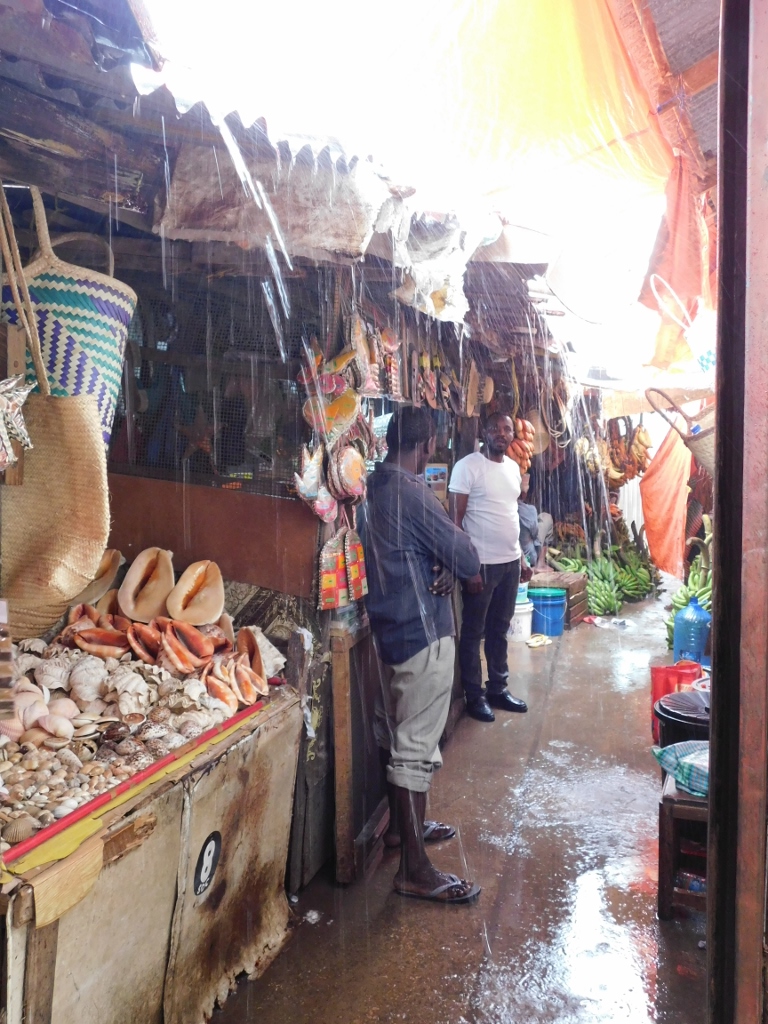 Darajani Market while the rain is pouring
Darajani Market while the rain is pouring
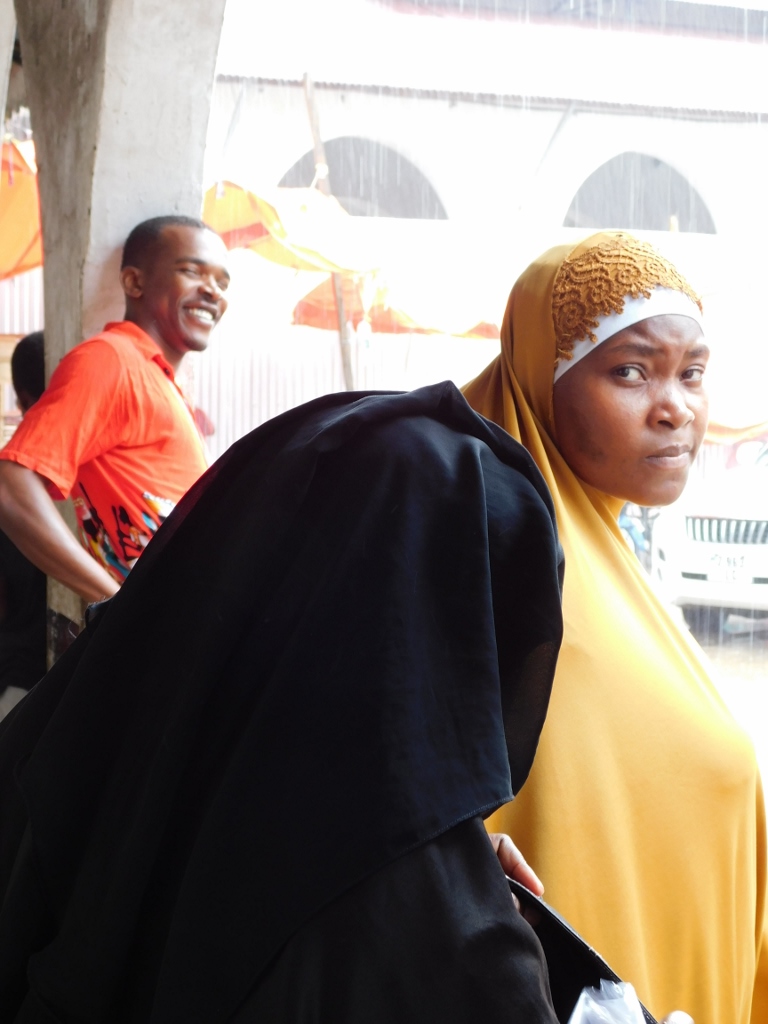 We are all waiting for the rain to stop
We are all waiting for the rain to stop
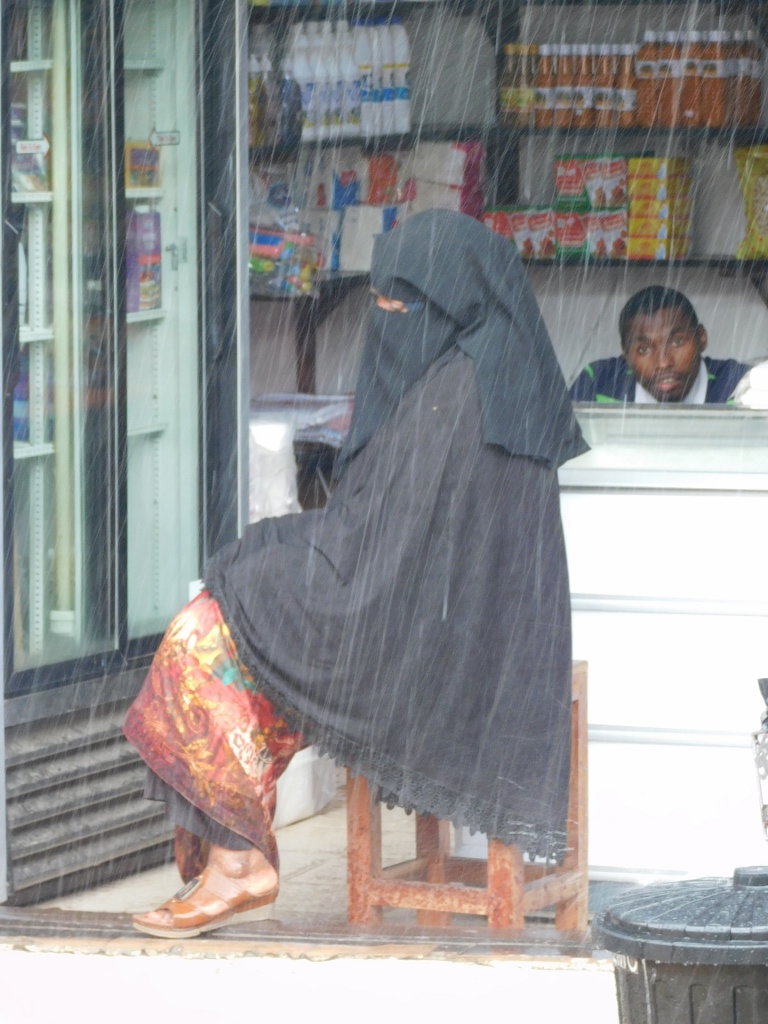 We are all waiting for the rain to stop
We are all waiting for the rain to stop
 Some have the protection in case of a shower
Some have the protection in case of a shower
And when the rain finally stopped, we continued with the visit to the market and the sightseeing of what was on offer.
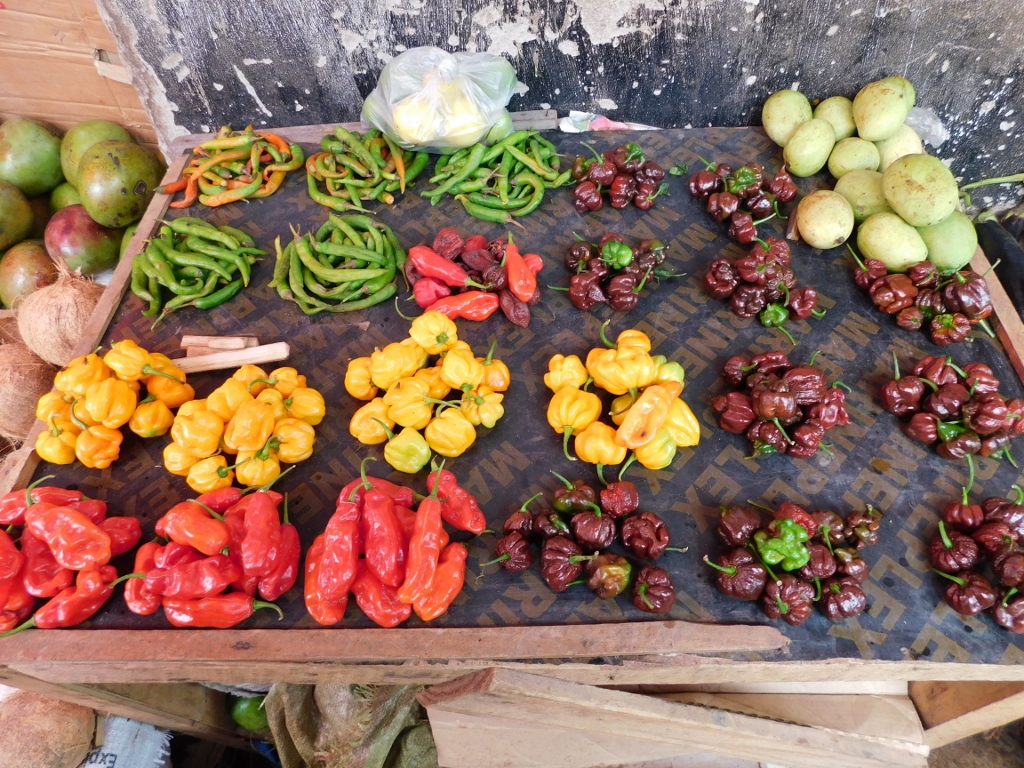 Darajani Market, a detail
Darajani Market, a detail
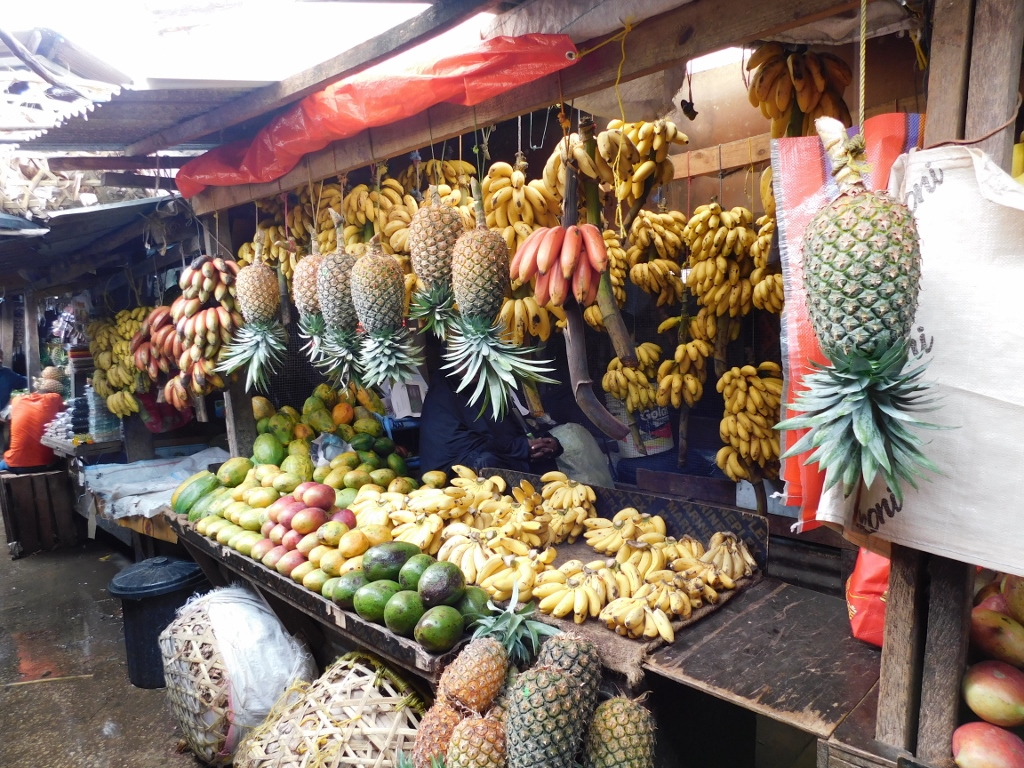 Darajani Market, a detail
Darajani Market, a detail
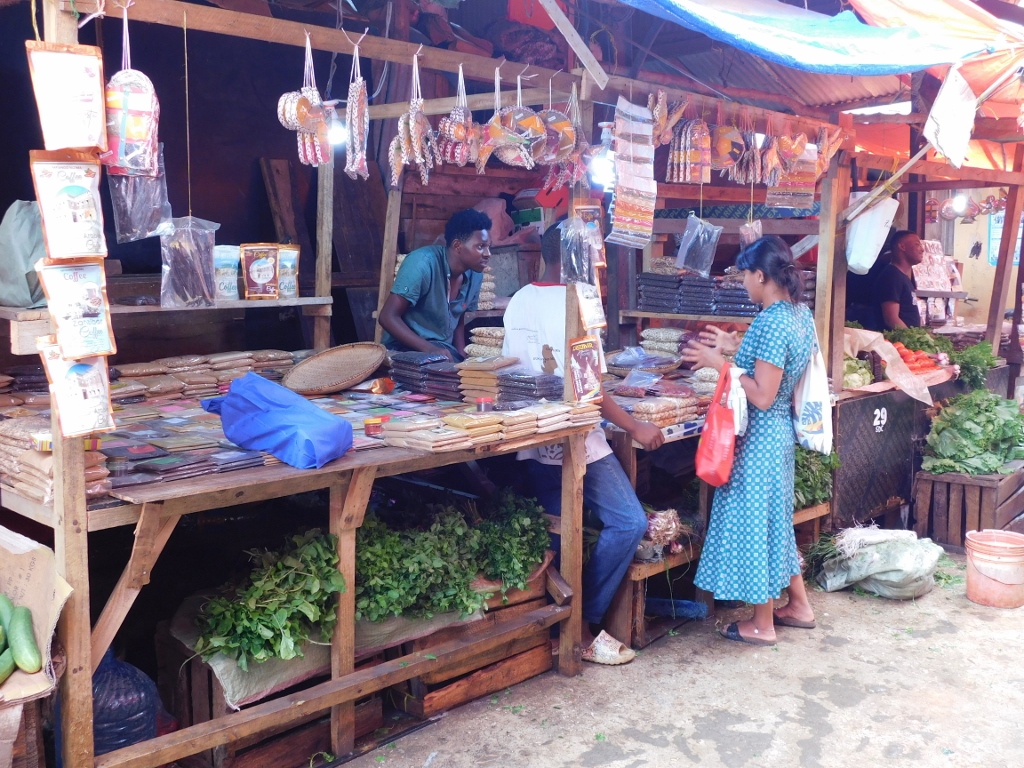 Darajani Market, a detail
Darajani Market, a detail
Then we ventured into the narrow streets of Stone Town again. Different buildings are in a different state, with some of them nicely restored, most often in order to host a modern hotel.
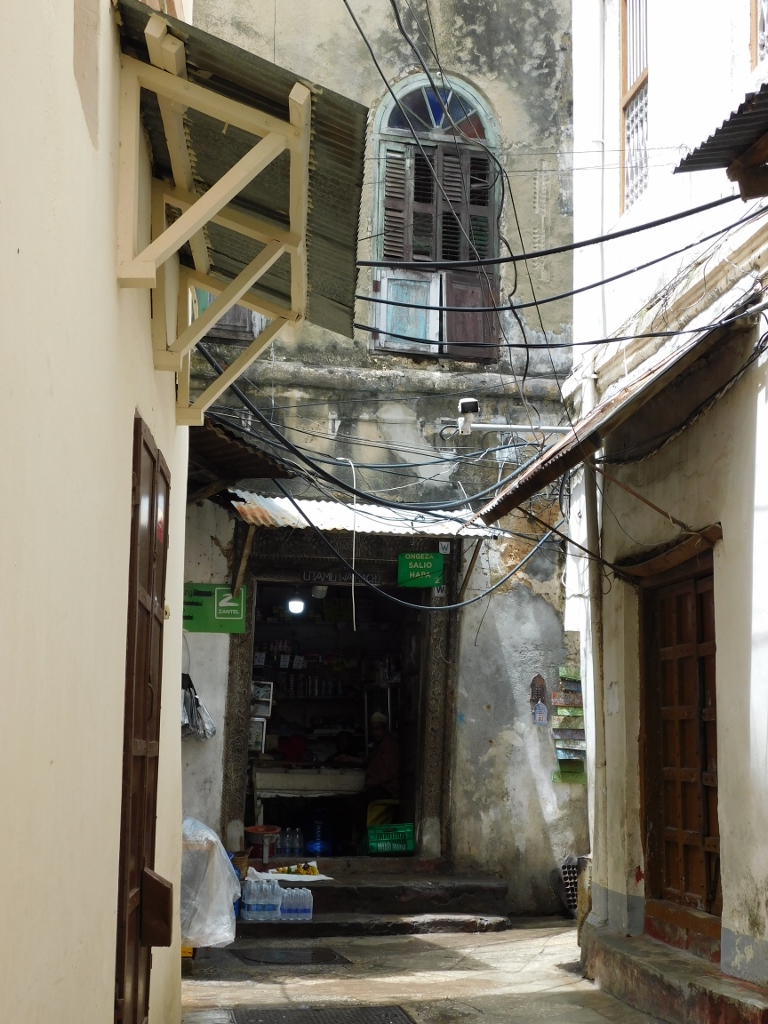 Stone Town, a detail
Stone Town, a detail
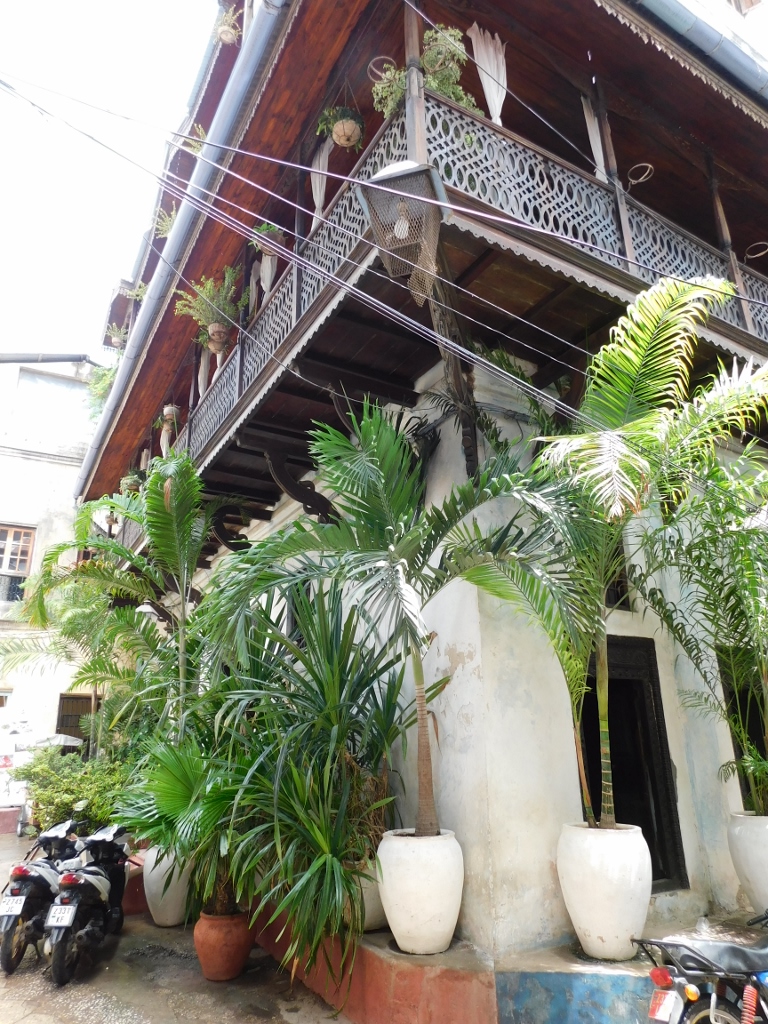 Stone Town, a detail
Stone Town, a detail
Although there are certainly numerous tourists around, Stone Town is primarily the place where the local population lives and the meeting of the differences in the street is always interesting, like in the photo below.
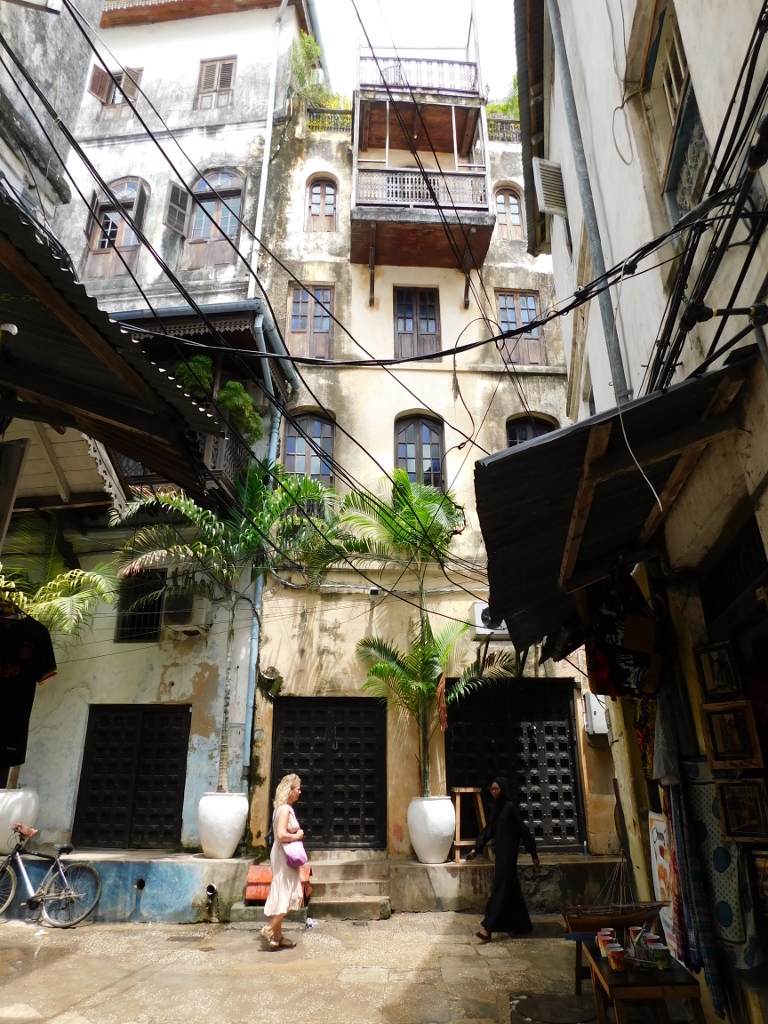 Stone Town, a detail
Stone Town, a detail
Also, comparatively often you can see ledges in front of the buildings which the local people use in lieu of benches, where they can hang around, either when they have coffee or play some board games.
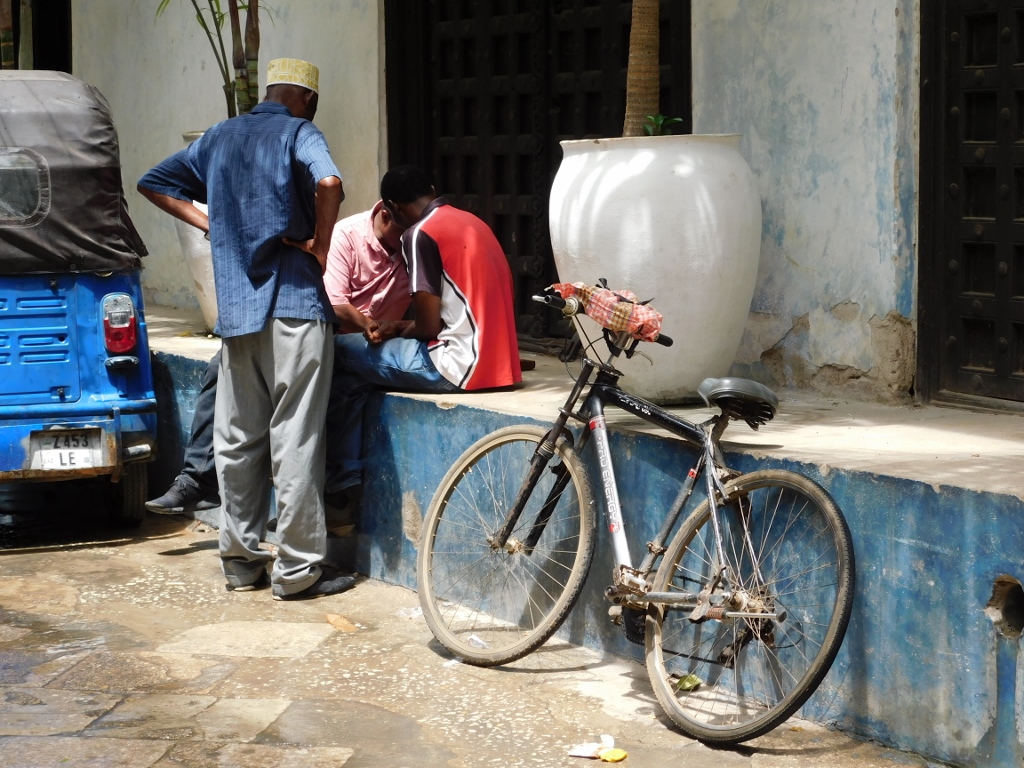 Stone Town, a detail
Stone Town, a detail
Still, even when I had no idea about what I was taking photos of or when I was not actually interested in whatever I was taking a photo of, I enjoyed the sights of the life in Stone Town on the island of Unguja within the semi-autonomous province and archipelago of Zanzibar.
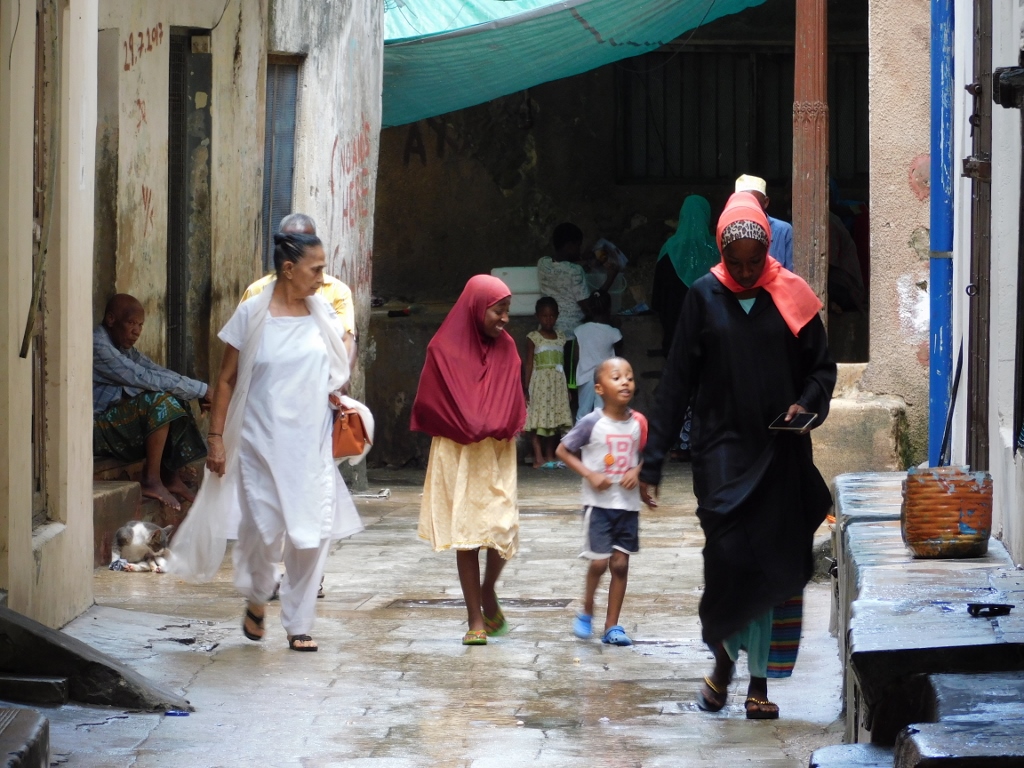 Stone Town, a detail
Stone Town, a detail
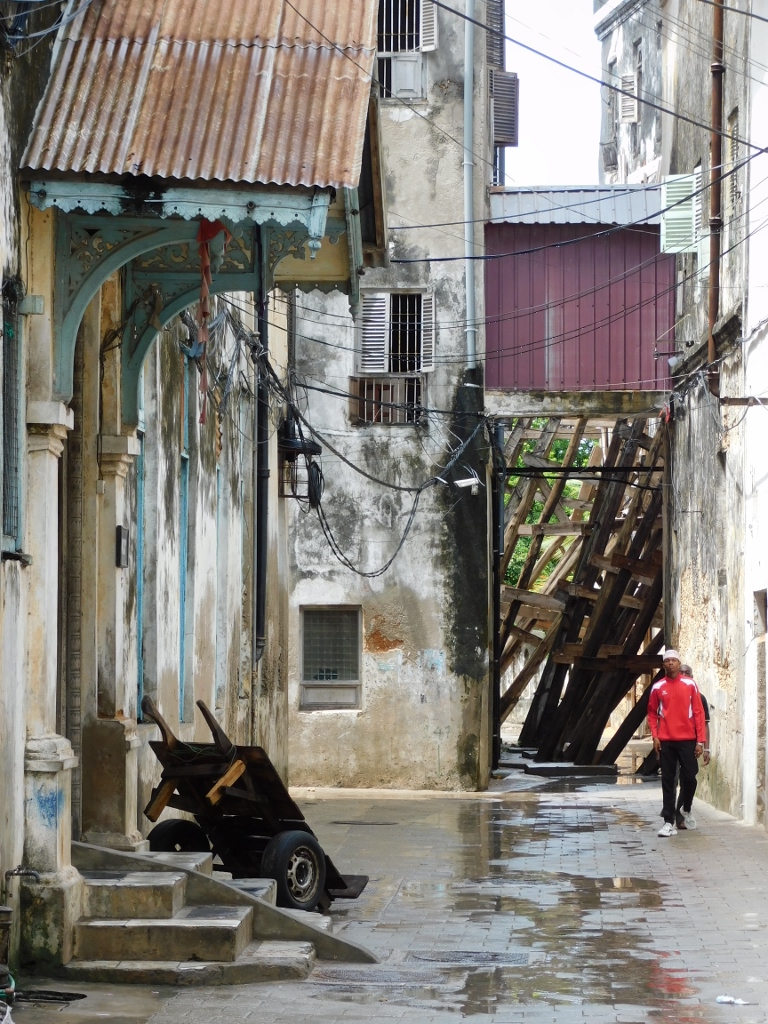 Stone Town, a detail
Stone Town, a detail